BIO BITES: Cellular Energy
1/105
There's no tags or description
Looks like no tags are added yet.
Name | Mastery | Learn | Test | Matching | Spaced |
|---|
No study sessions yet.
106 Terms
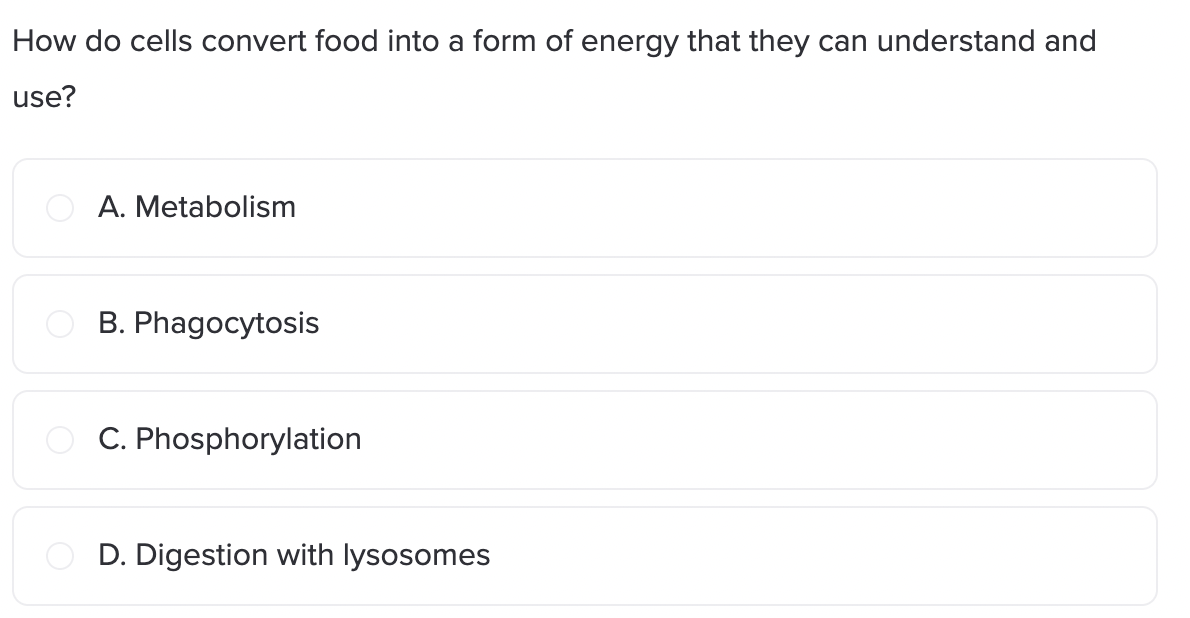
A
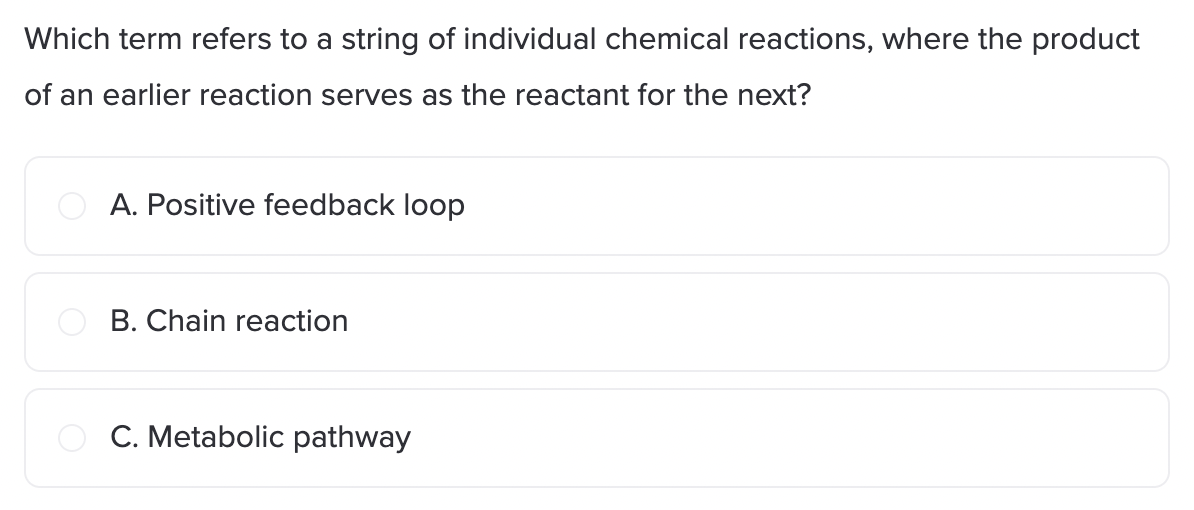
C
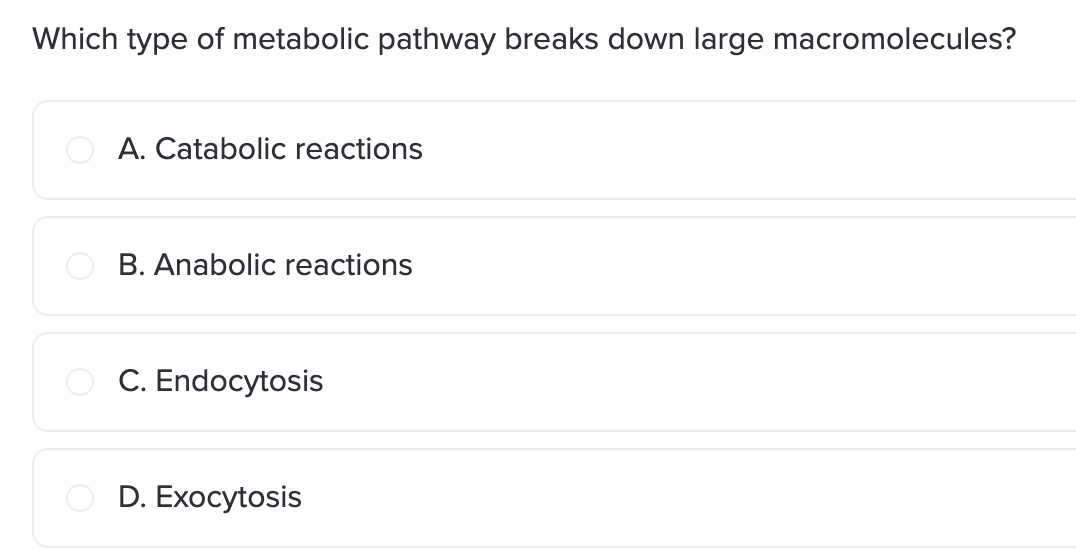
A
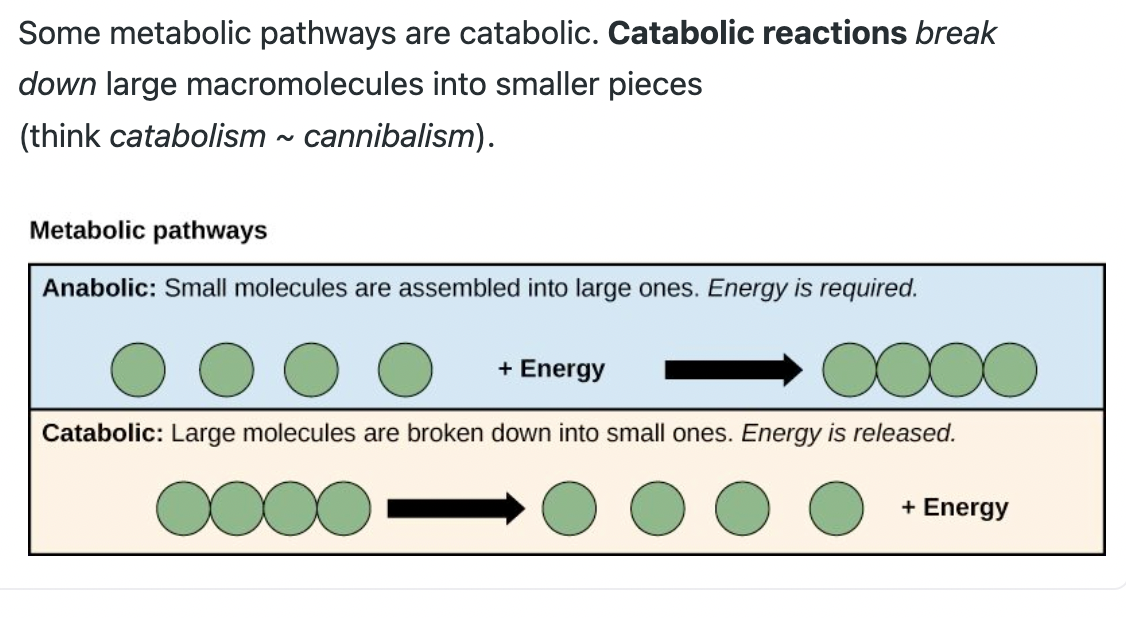
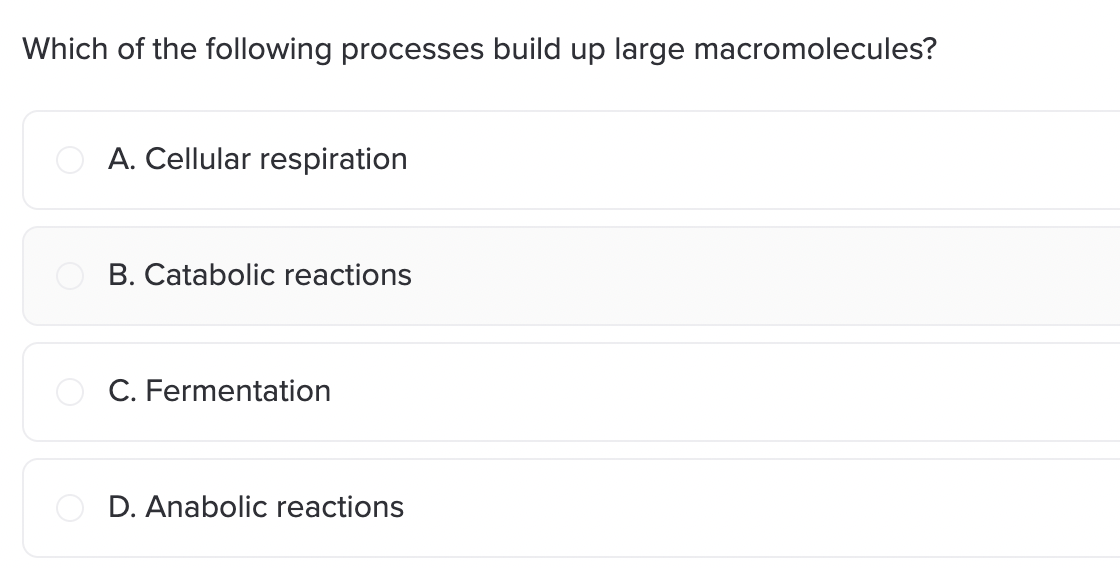
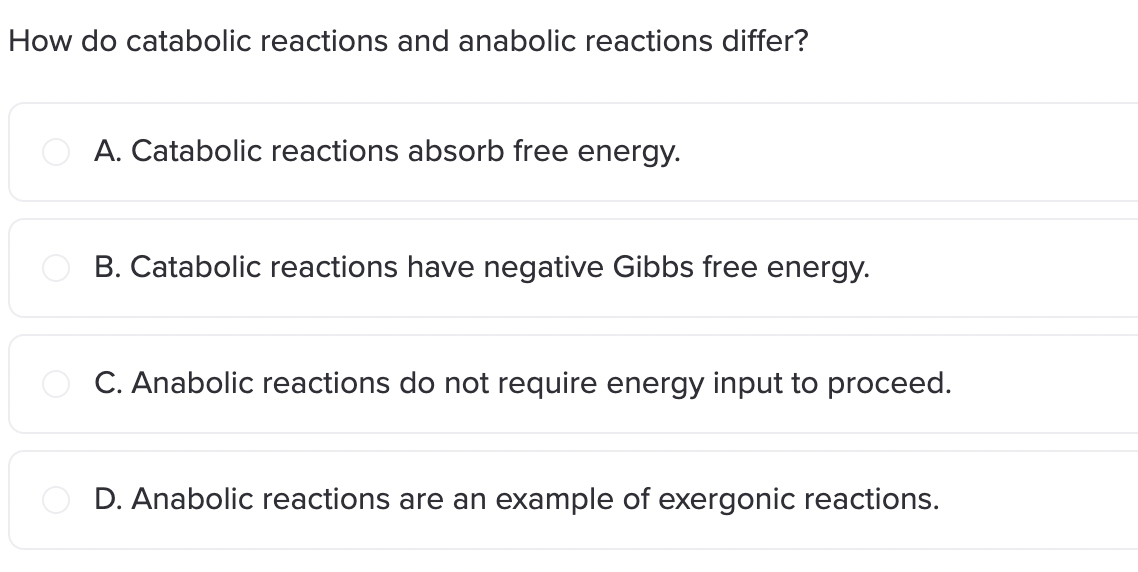
B
Catabolic reactions release free energy, so they are an example of exergonic reactions (energy release). They are spontaneous reactions (negative Gibbs free energy, -∆G) because they do not require energy input to proceed.
Mnemonic: EXergonic reactions mean that free energy is EXiting the system.
Anabolic reactions absorb free energy, so they are an example of endergonic reactions (requires energy). These are non-spontaneous processes because they require energy input to proceed to the final state.
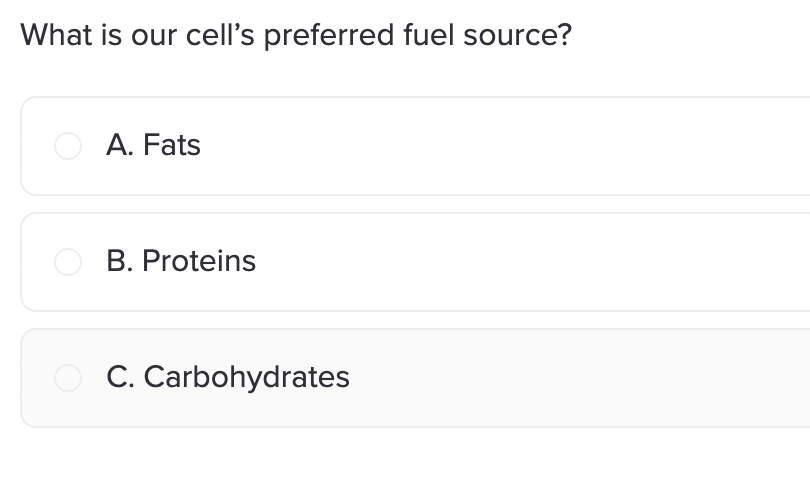
C
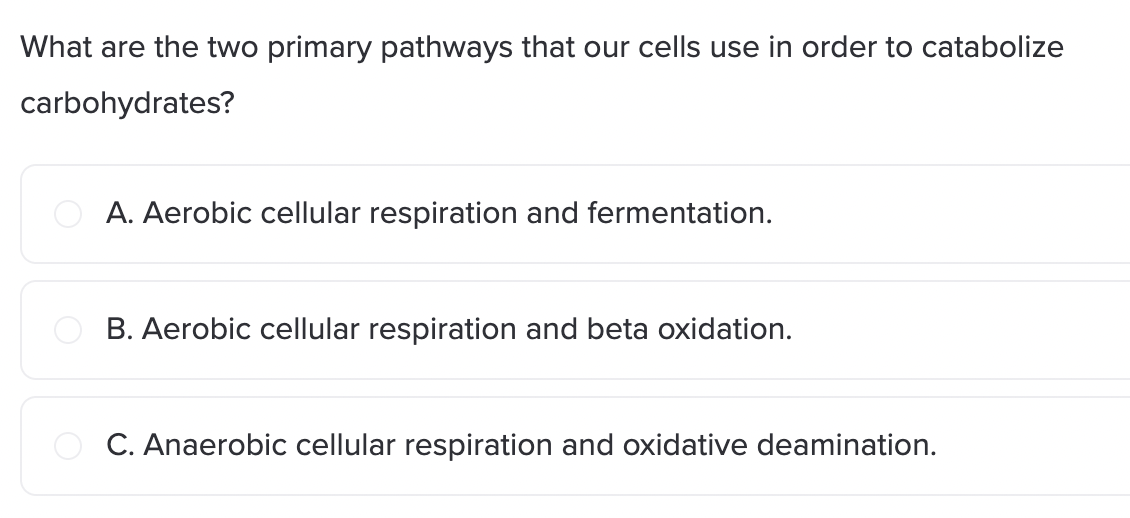
A

A
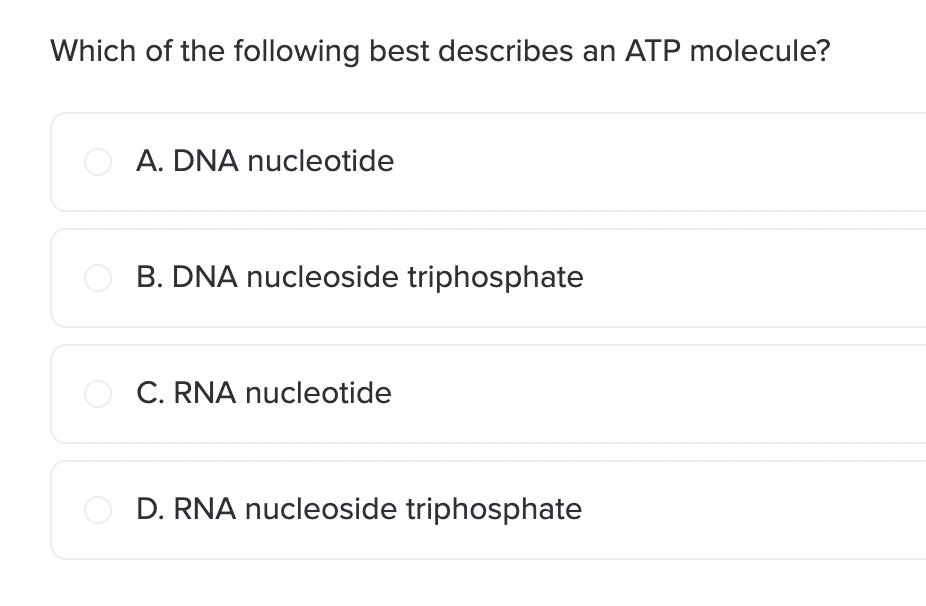
D

A
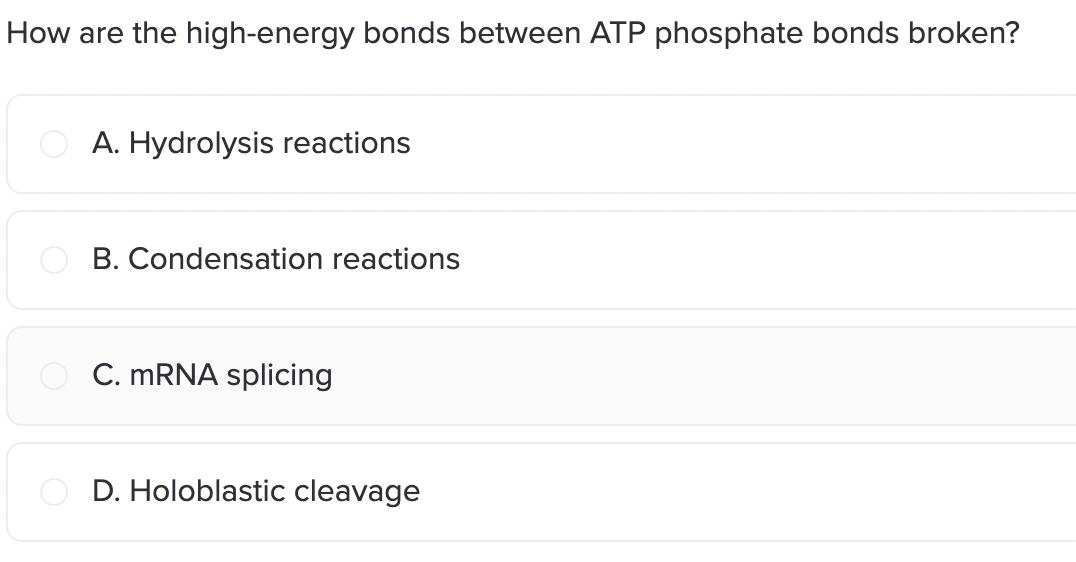
A
There are high energy bonds between phosphate groups. These release significant free energy whenever they are broken by a hydrolysis reaction.
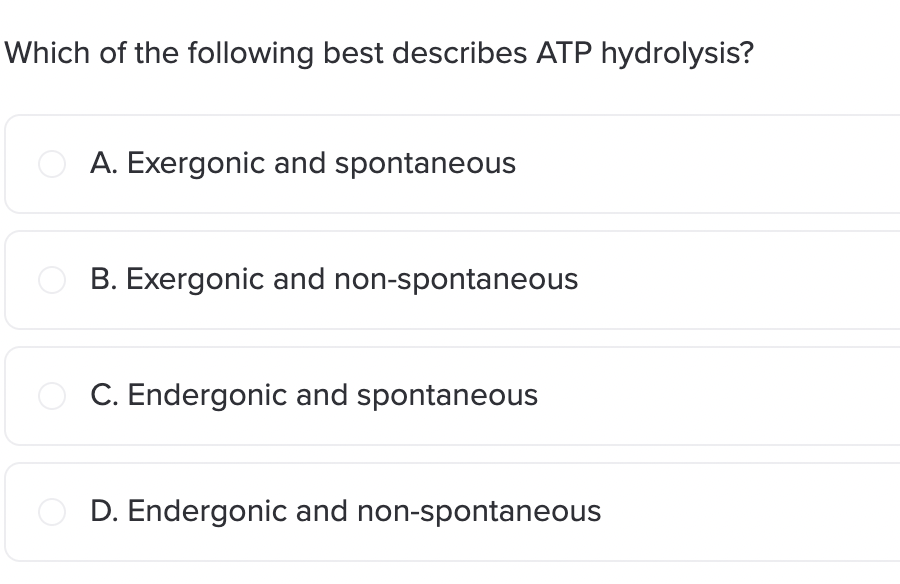
A
ATP hydrolysis reactions release free energy, making them spontaneous ( -∆G) and exergonic. The free energy can then power endergonic processes to keep cells out of chemical equilibrium.
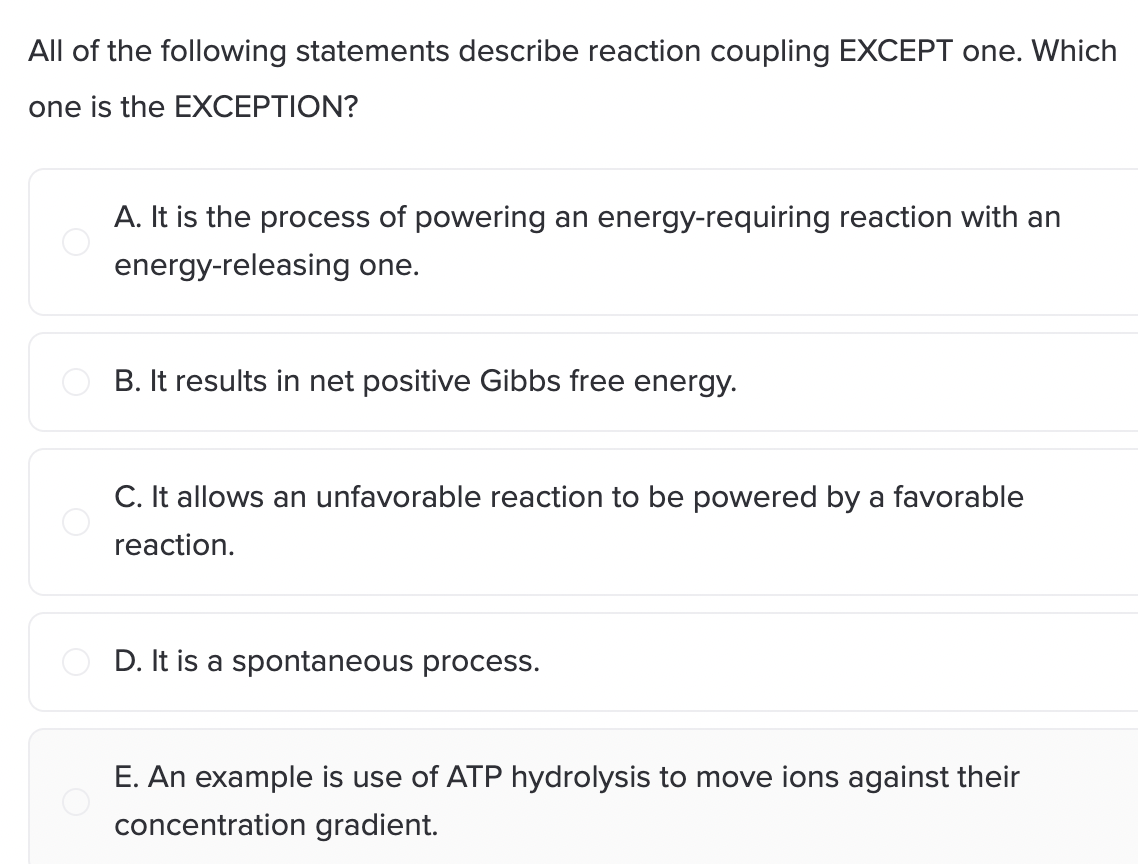
B
Reaction coupling is the process of powering an energy-requiring reaction with an energy-releasing one. It allows an unfavorable reaction to be powered by a favorable reaction, making the net ∆G negative (exergonic = releases energy + spontaneous).
For example, use the power of ATP hydrolysis (energy releasing) to move ions against their concentration gradient (energy requiring).
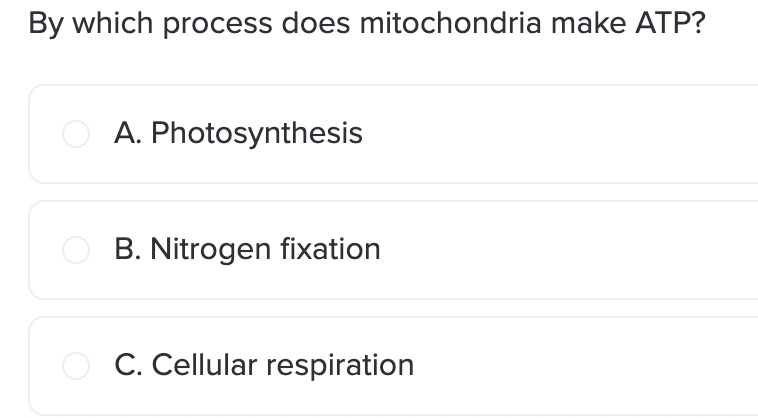
C
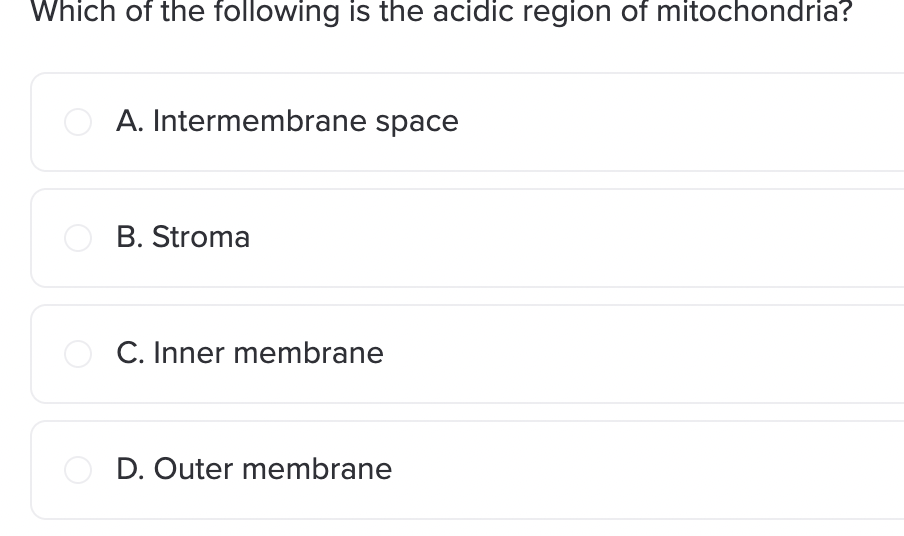
A
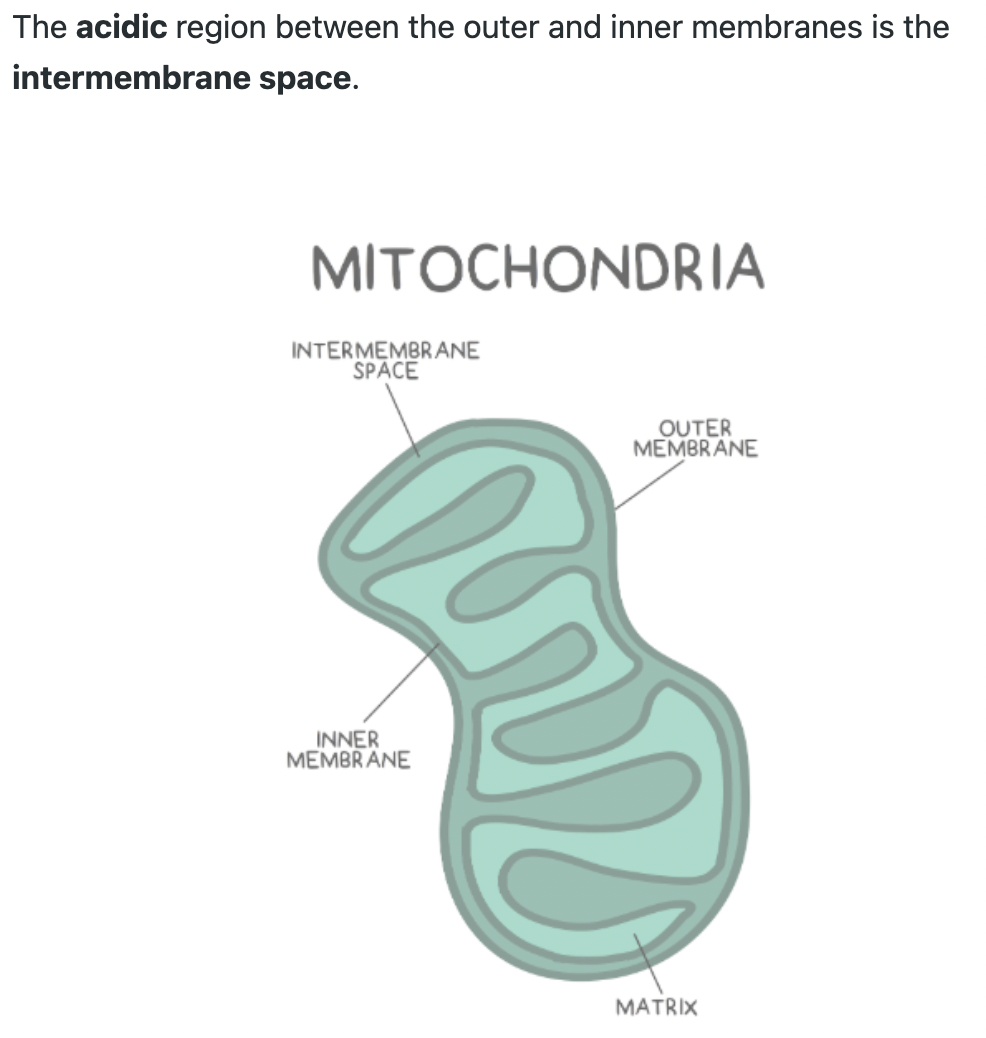

B
Mitochondria are found in most eukaryotic cell types. However, their abundance varies depending on the cell’s particular energy needs. For example, human muscle cells (myocytes) have a high energy requirement, so there are many mitochondria in them.
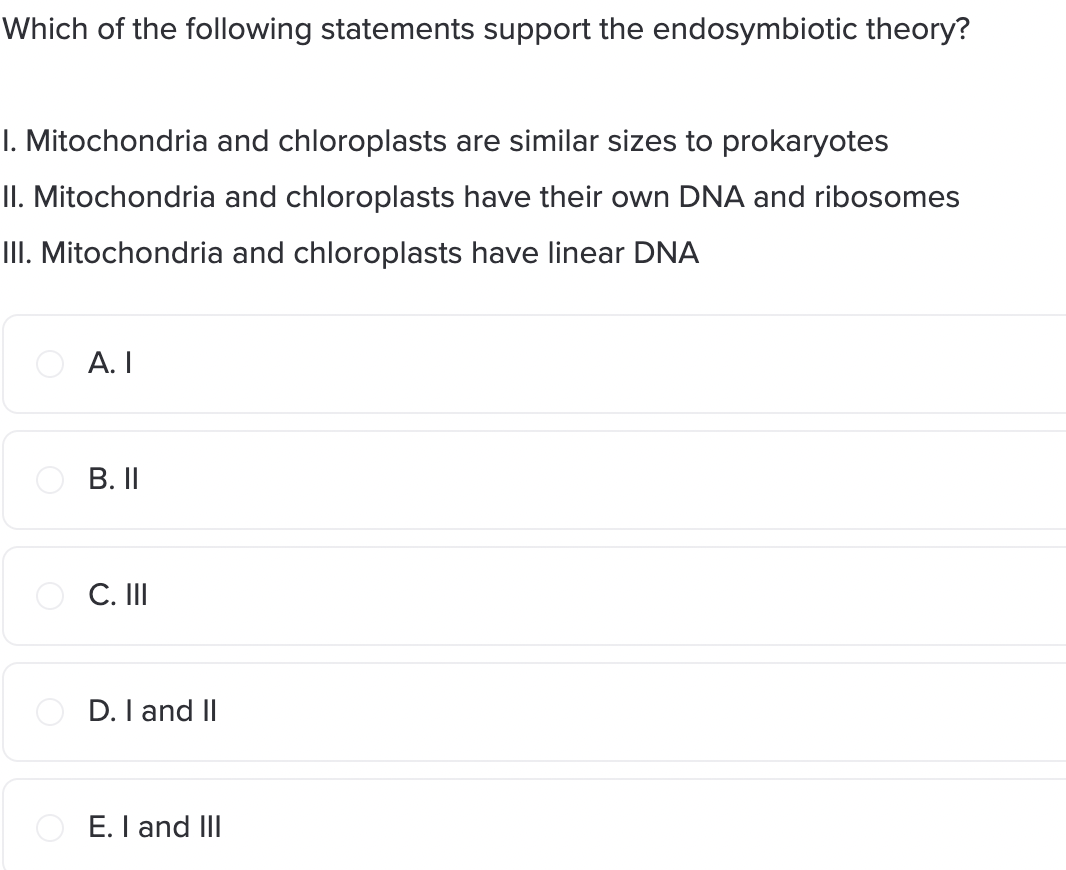
D

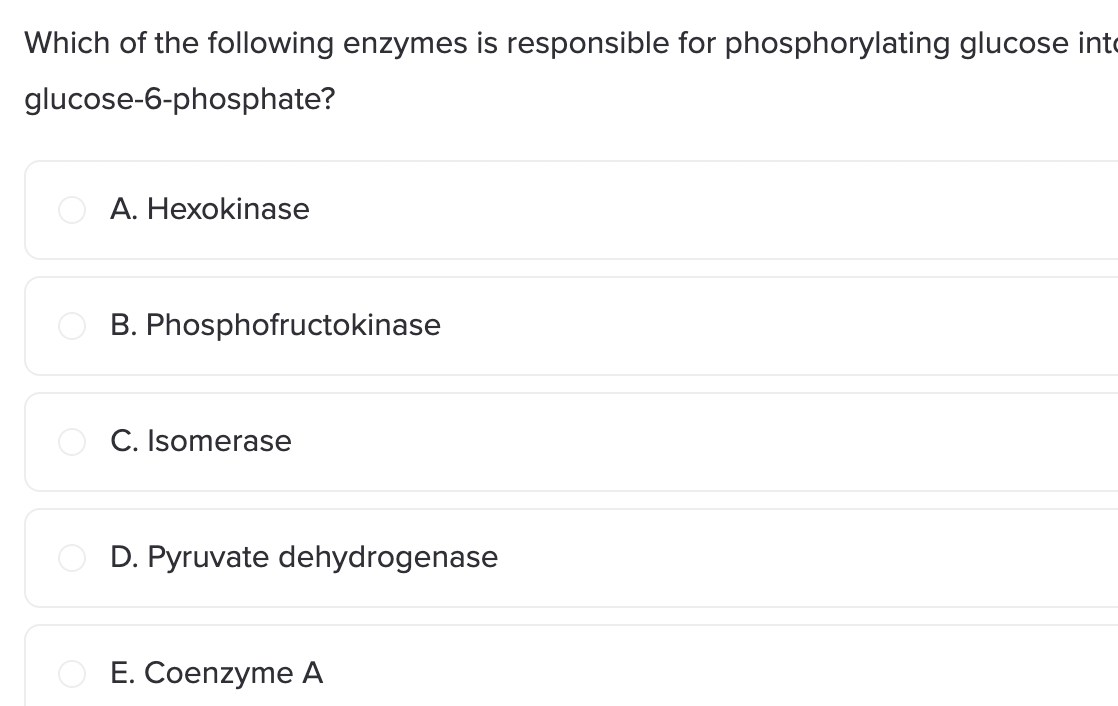
A
The first step of the energy investment phase of glycolysis is characterized by the phosphorylation of glucose into glucose-6-phosphate.
The phosphorylation of glucose is mediated by hexokinase, which uses an ATP molecule to facilitate the phosphorylation of glucose into glucose-6-phosphate.
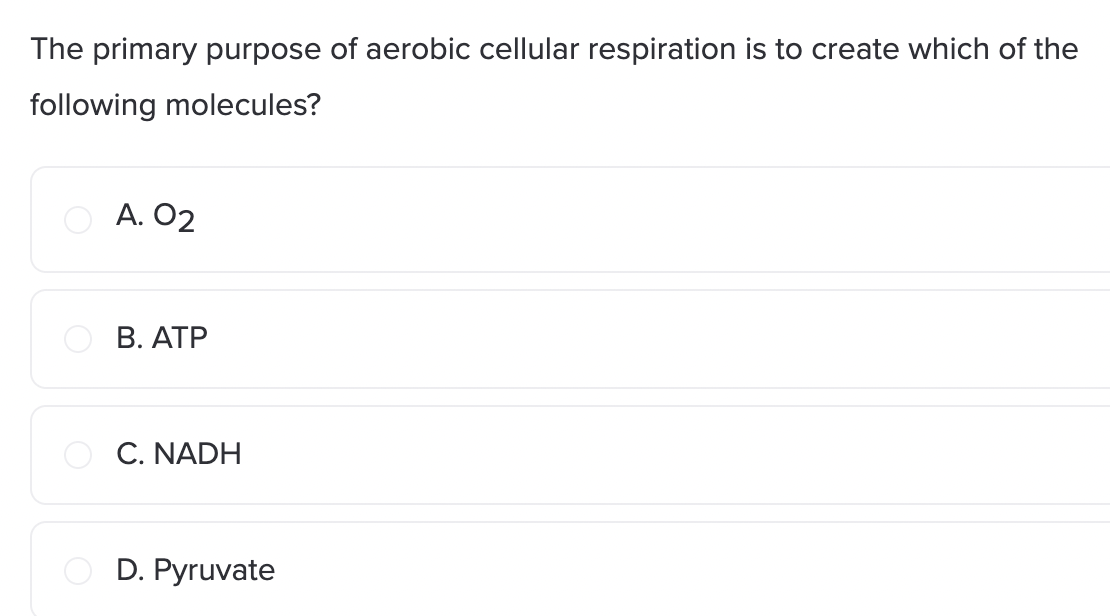
B
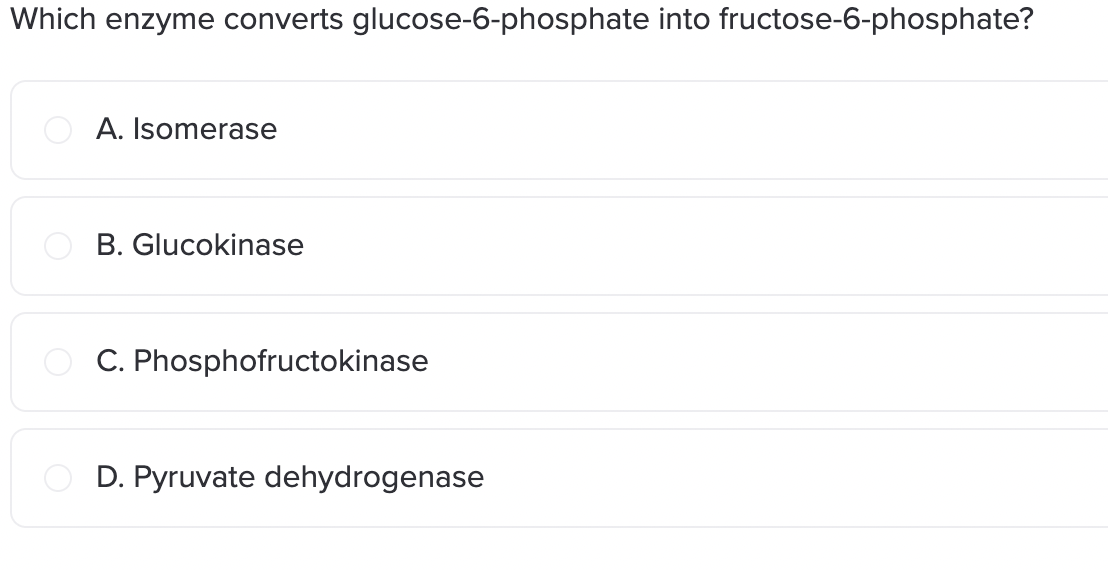
A
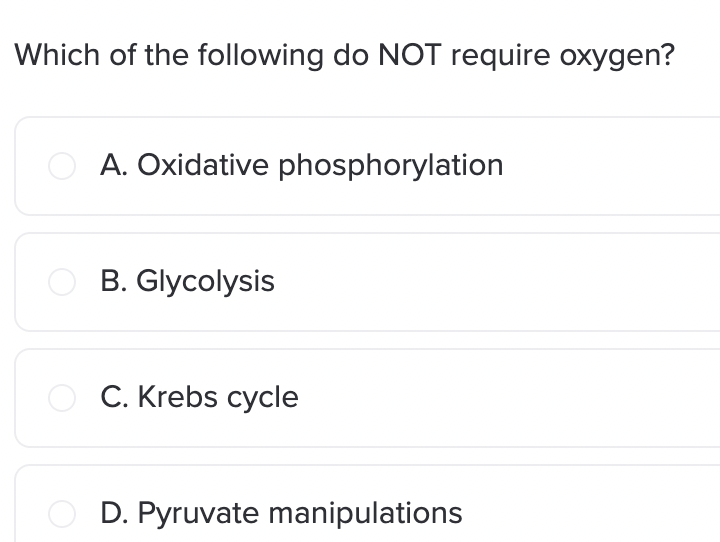
B
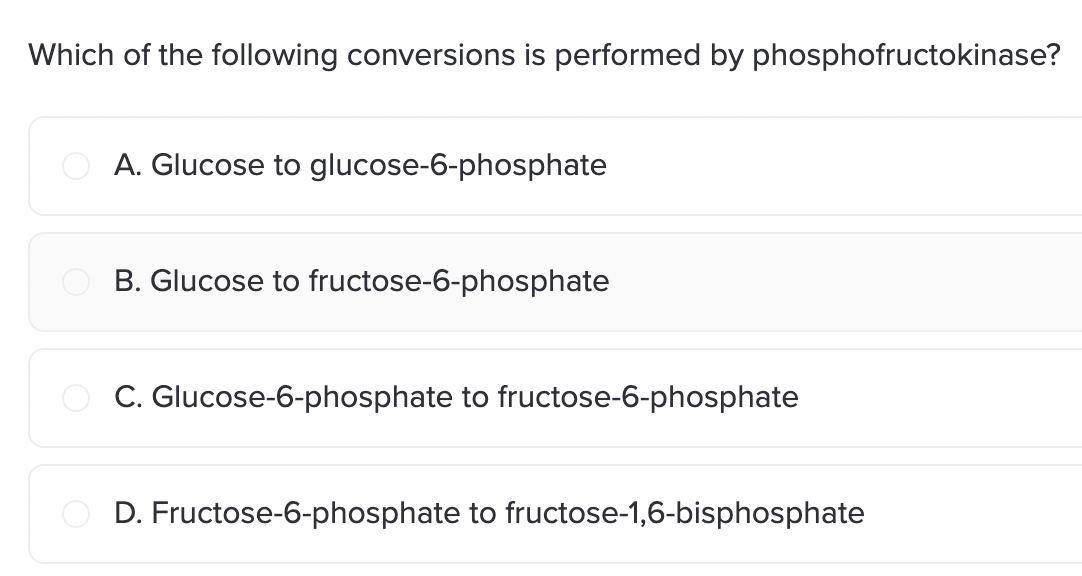
D
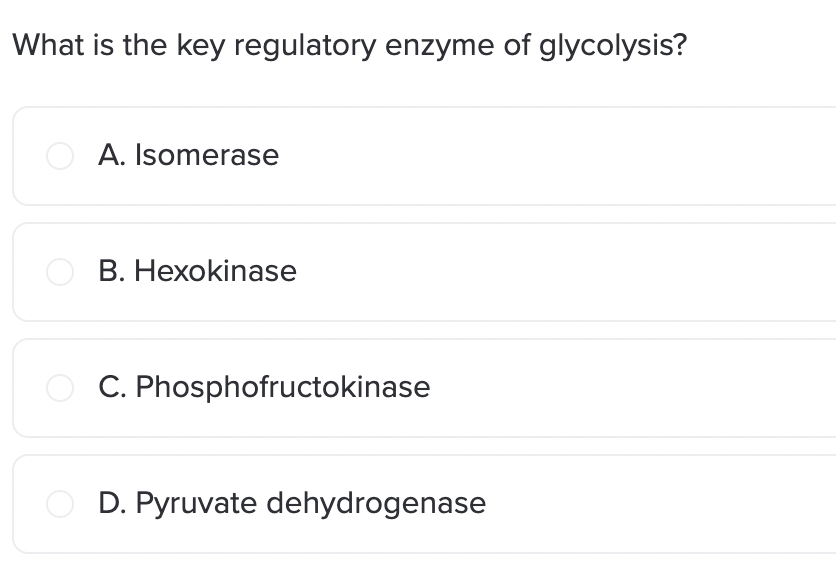
C
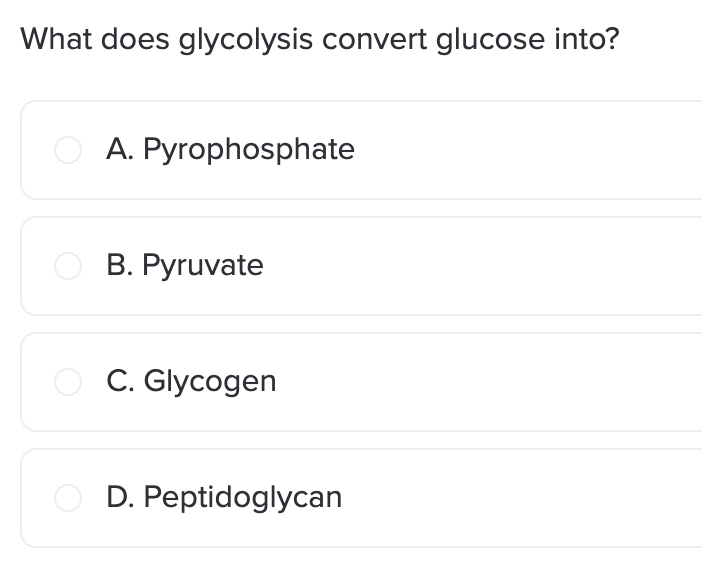
B

C
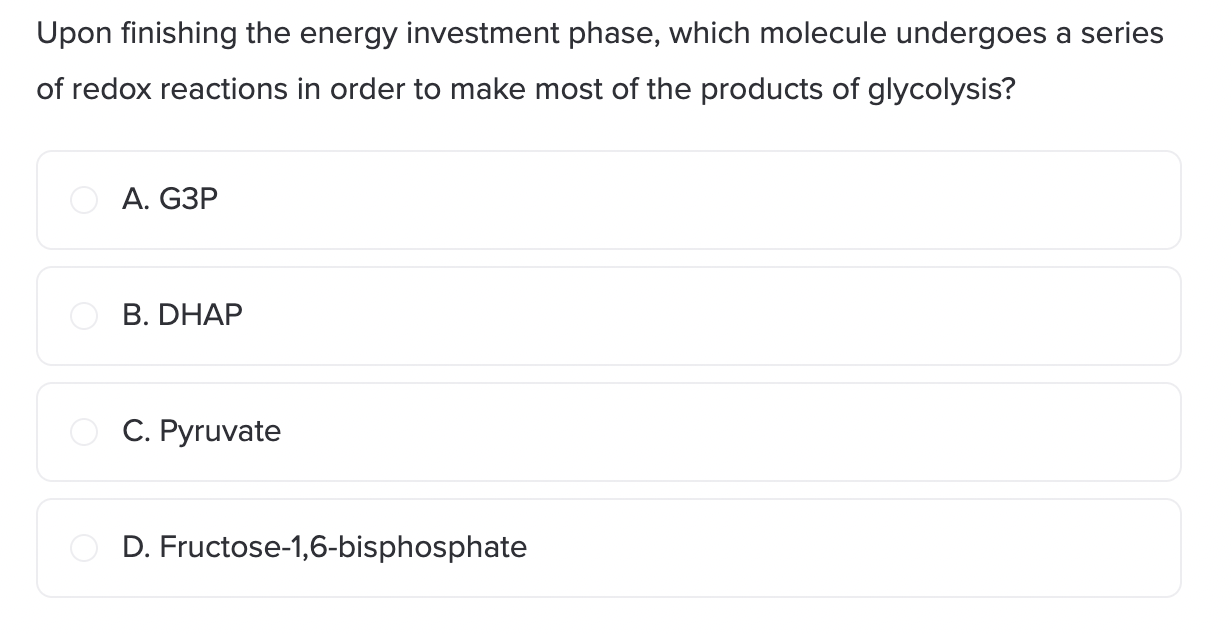
A
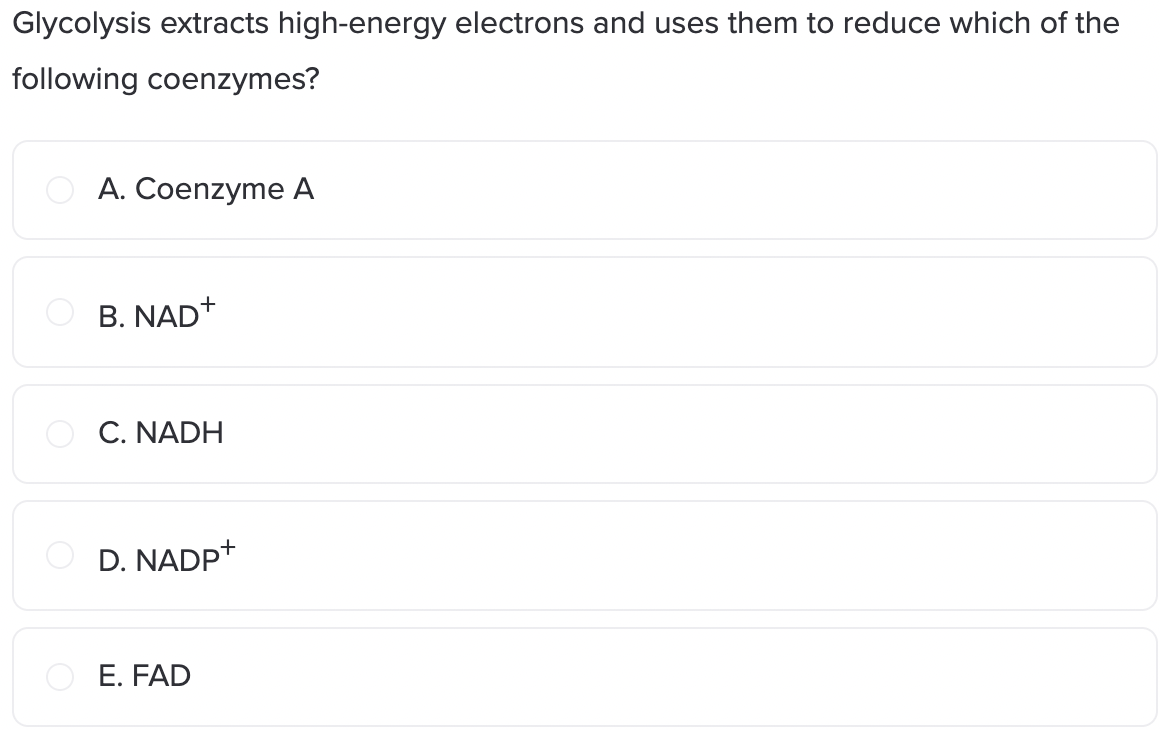
B

D
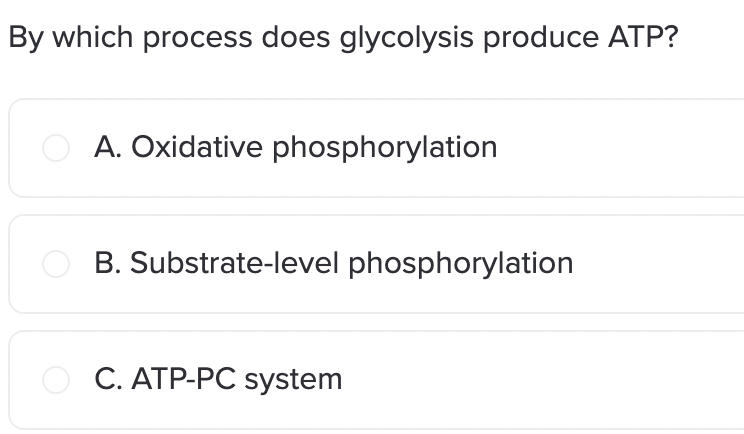
B
Substrate-level phosphorylation is the production of ATP or GTP by the transfer of a phosphate group directly from a phosphate-containing substrate. This type of phosphorylation occurs during glycolysis in order to produce ATP.
DAT Pro-Tip: Oxidative phosphorylation occurs exclusively in the electron transport chain. Everything that makes ATP that occurs outside of the electron transport chain is considered substrate-level phosphorylation.

C
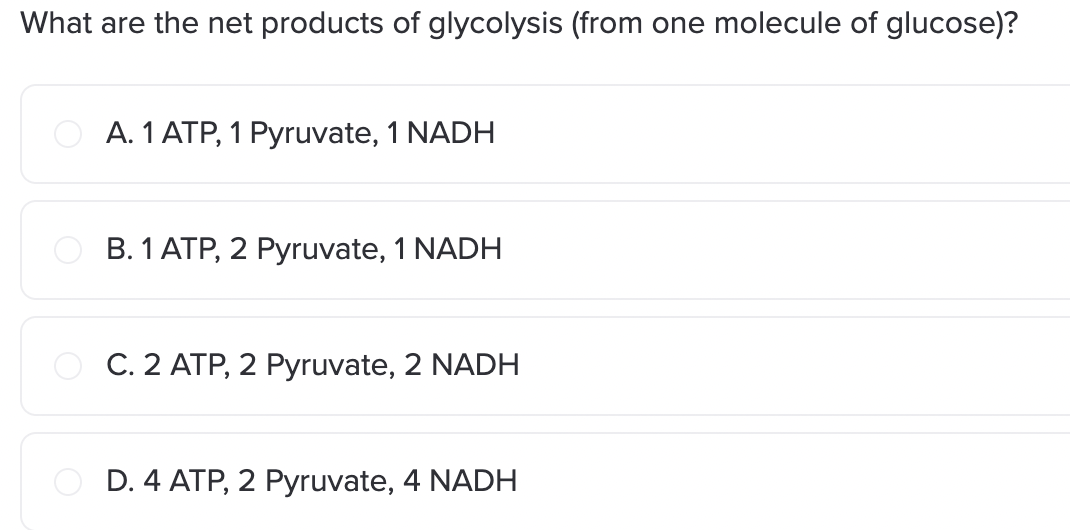
C
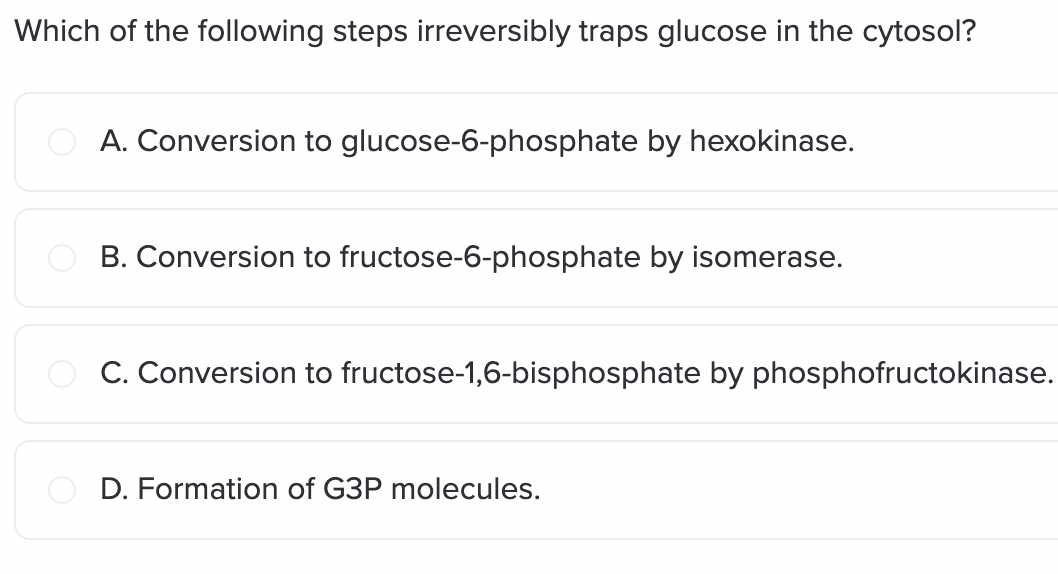
A
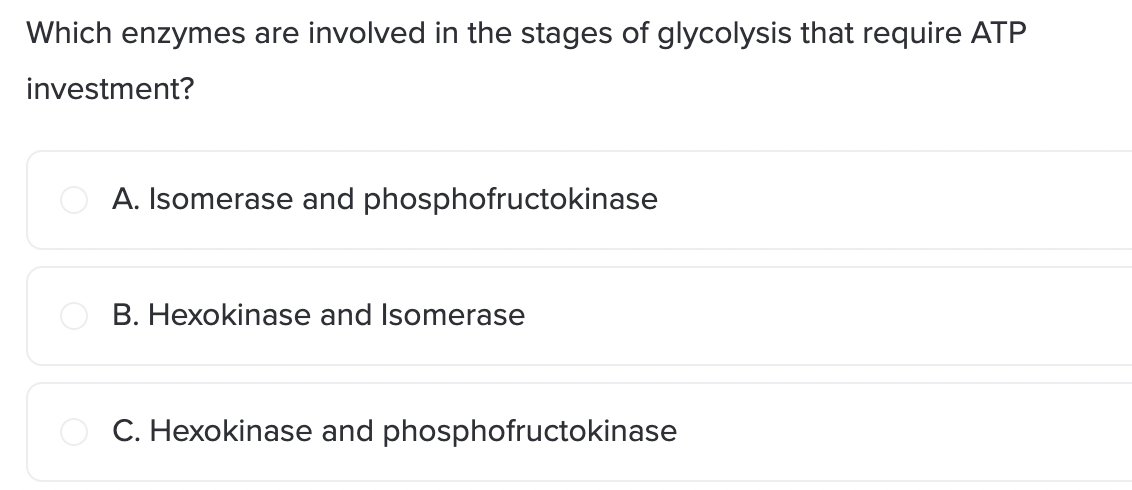
C

A
In eukaryotes, pyruvate molecules must first pass from the cytosol into the mitochondrial matrix.
DAT Pro-Tip: Pyruvate manipulations occur in the cytosol for prokaryotes, because they do not have membrane-bound organelles such as mitochondria.
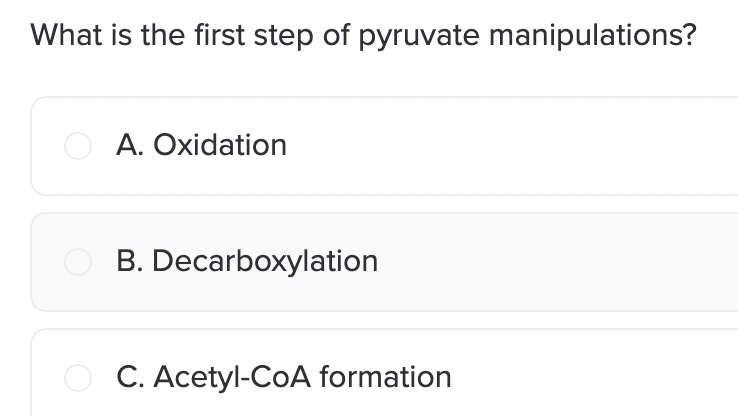
B
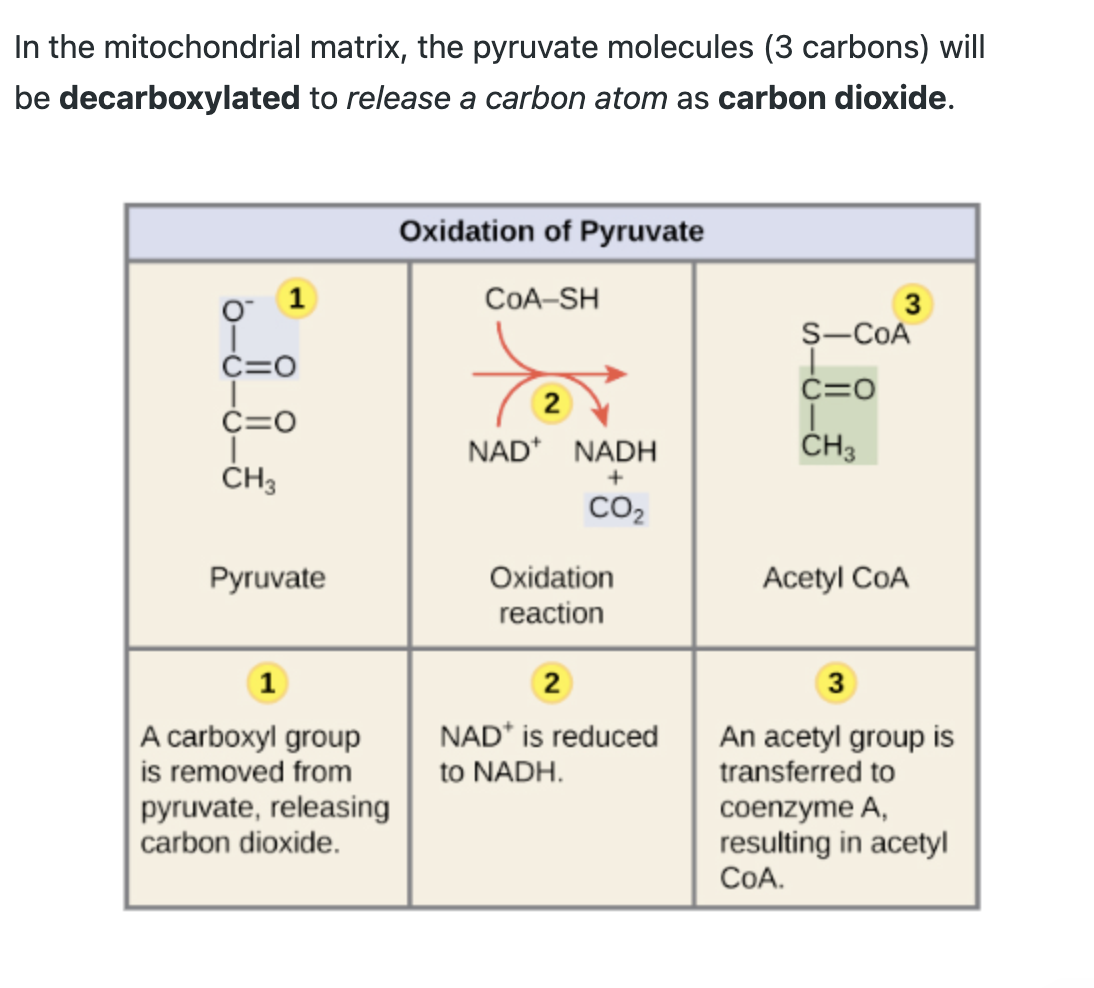
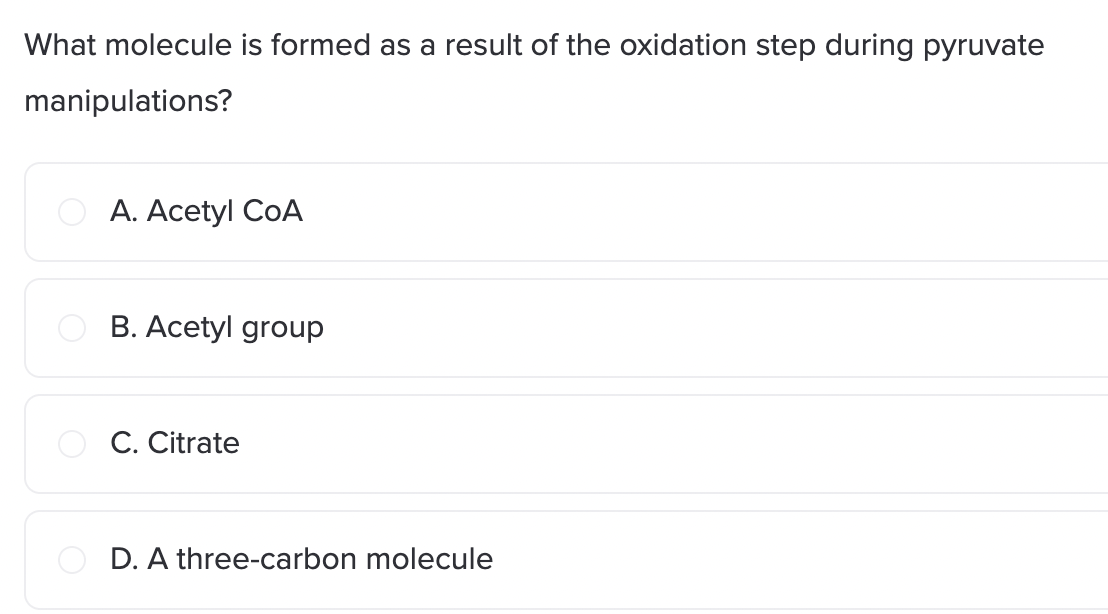
B
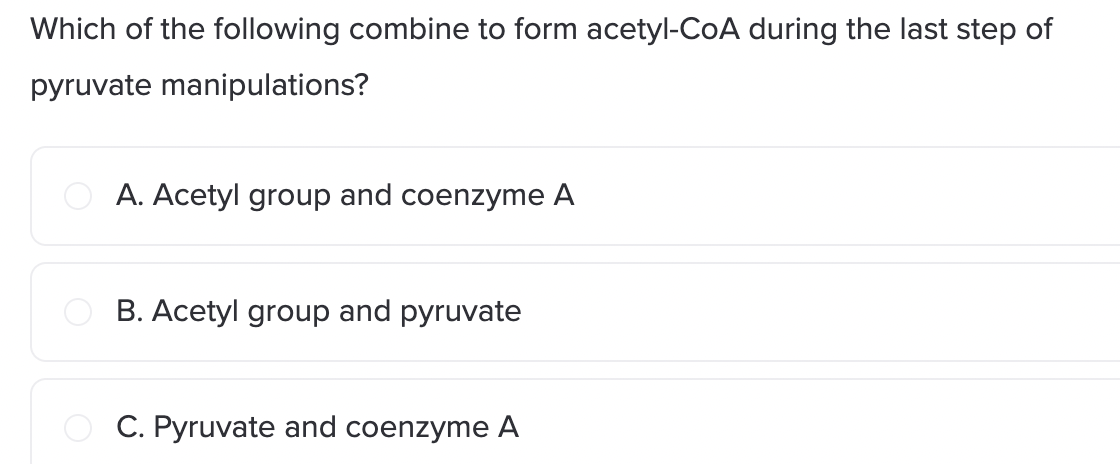
A
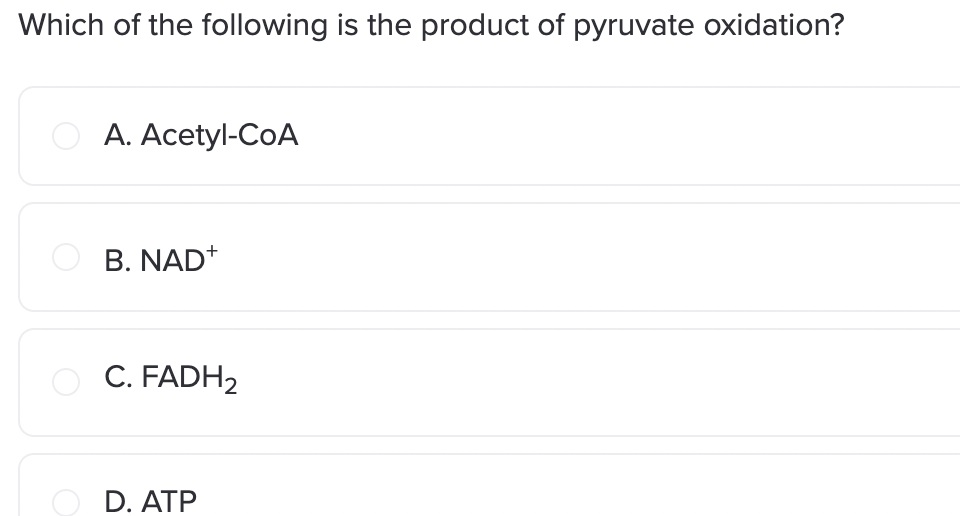
A
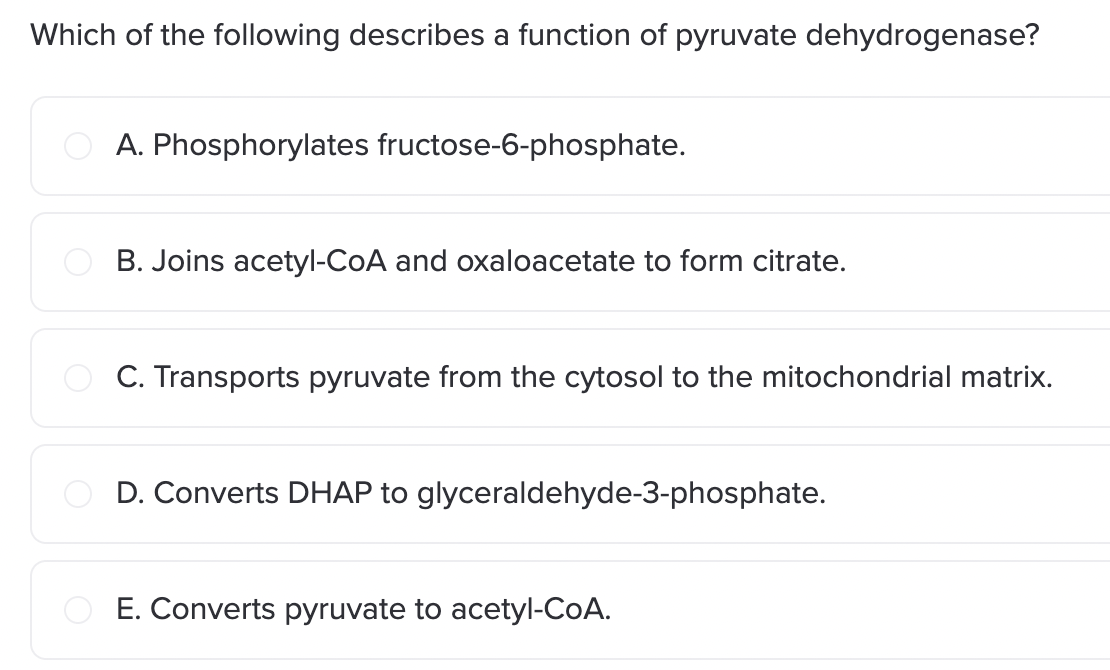
E
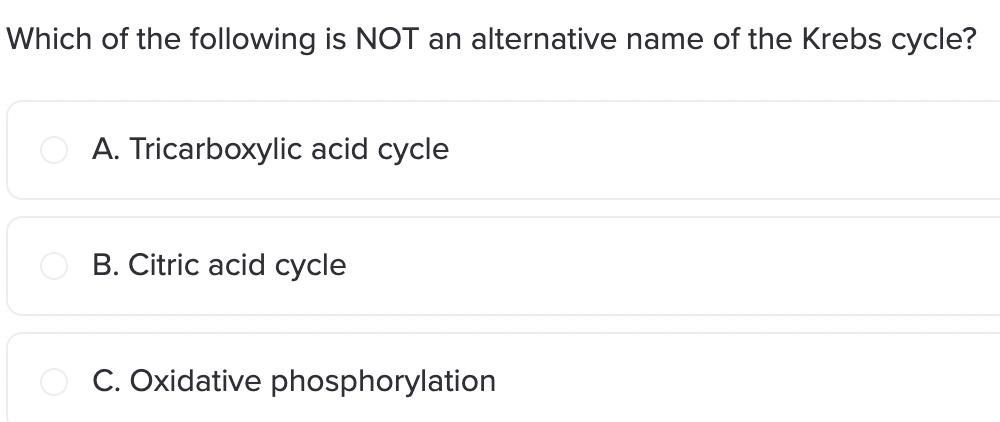
C
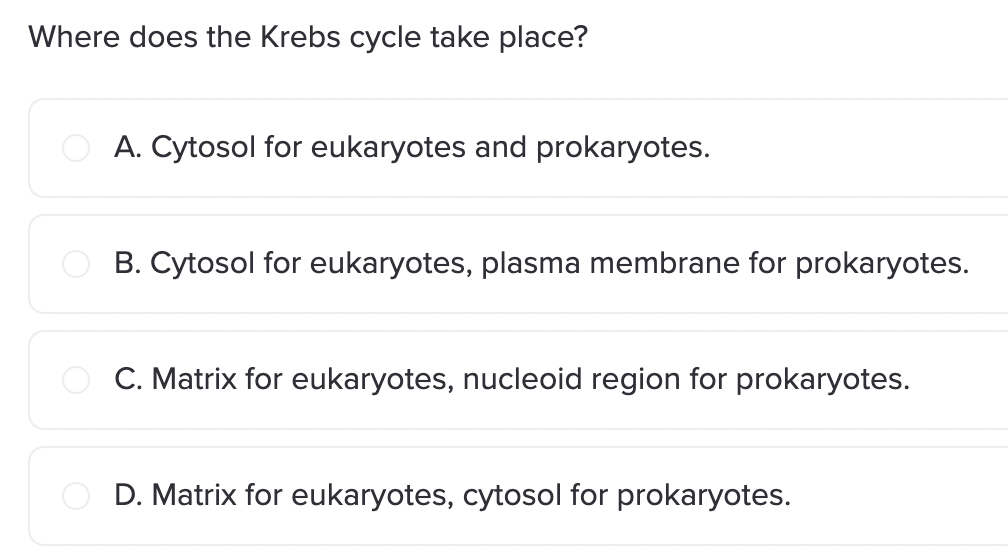
D
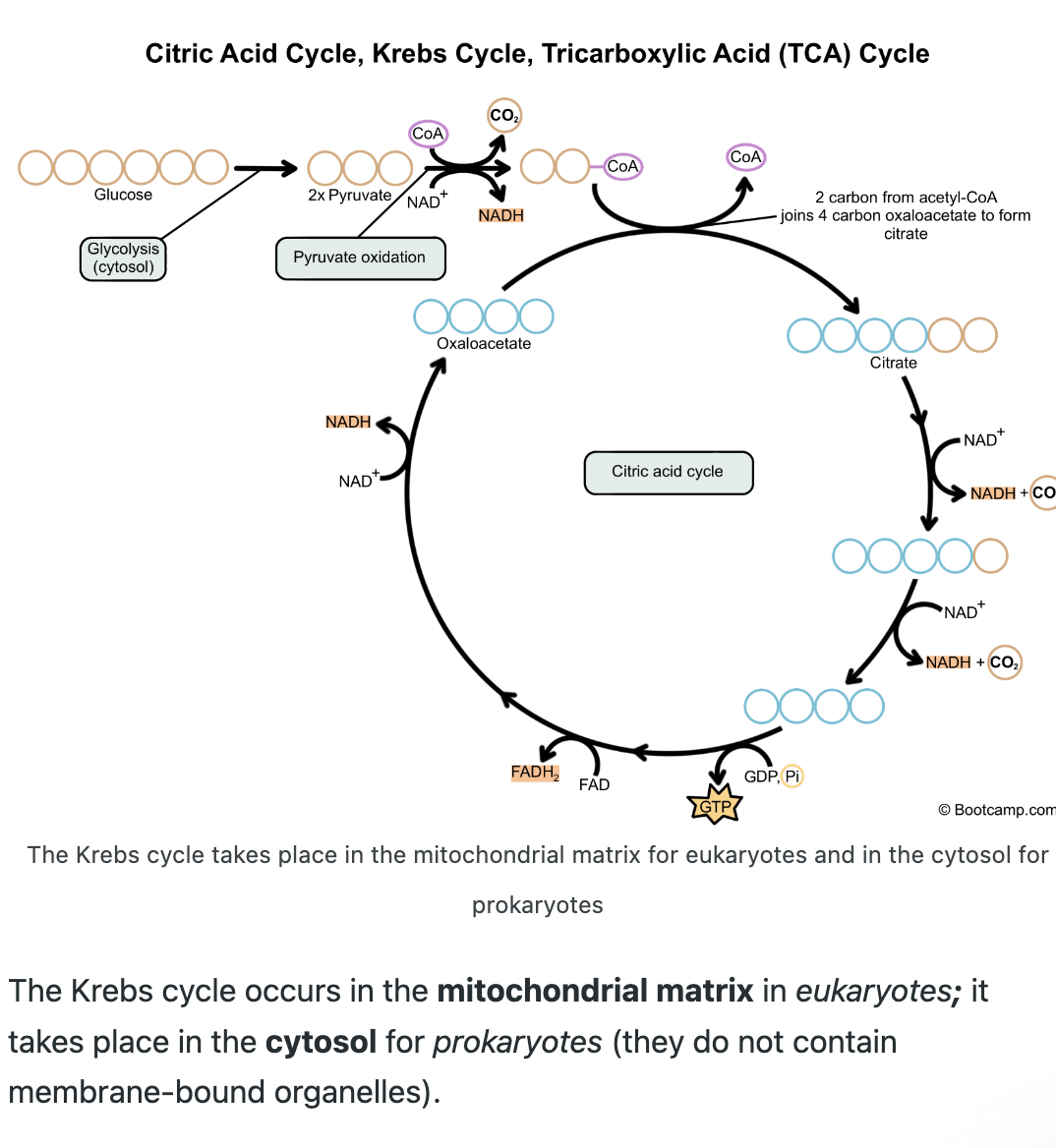

C
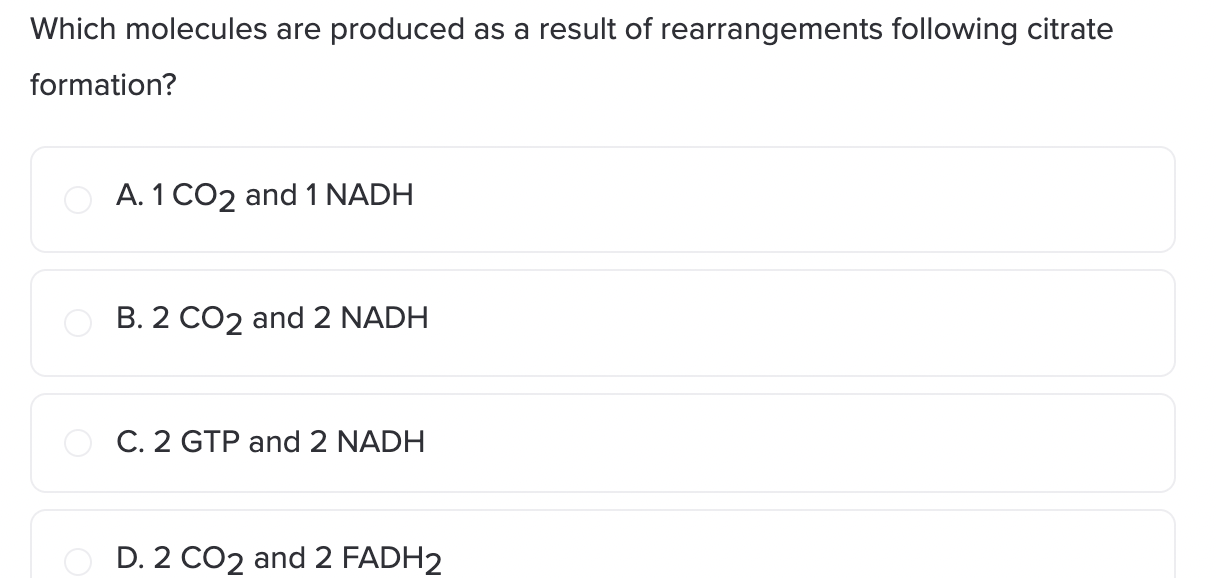
B
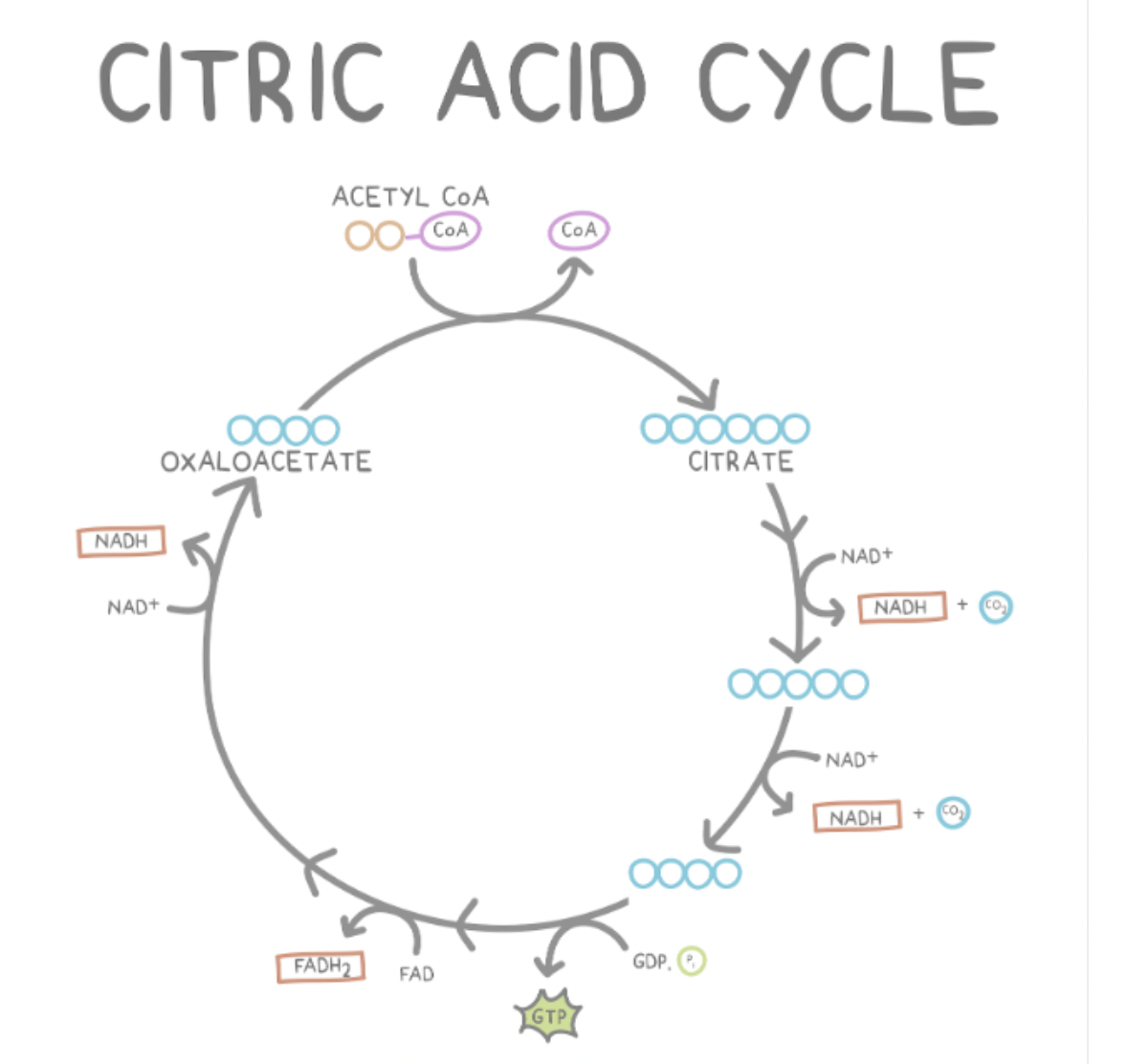
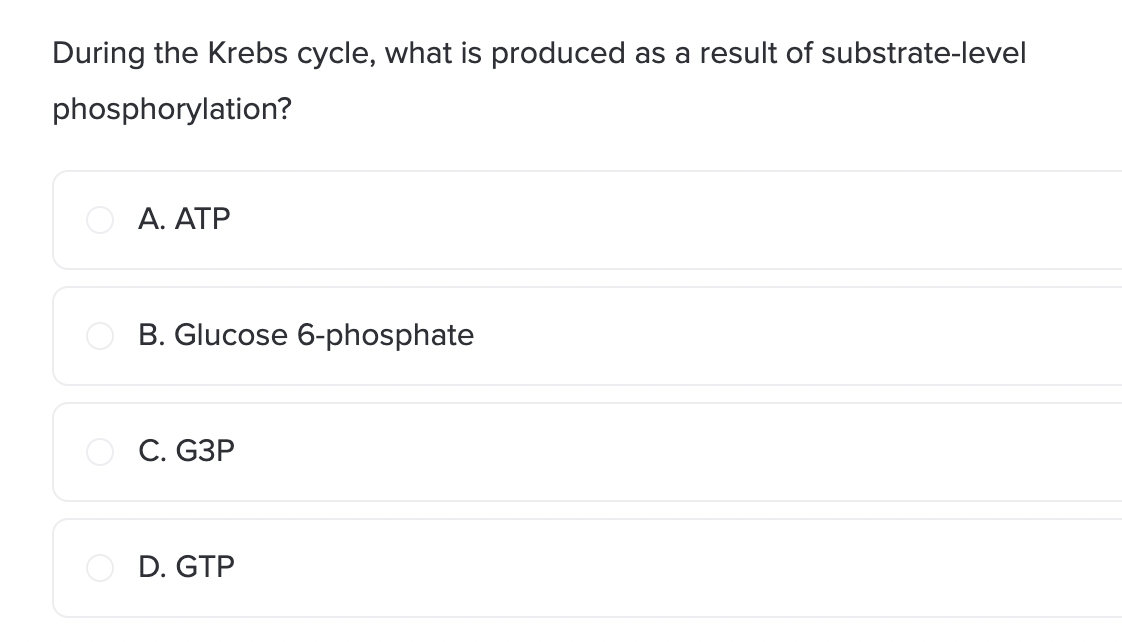
D
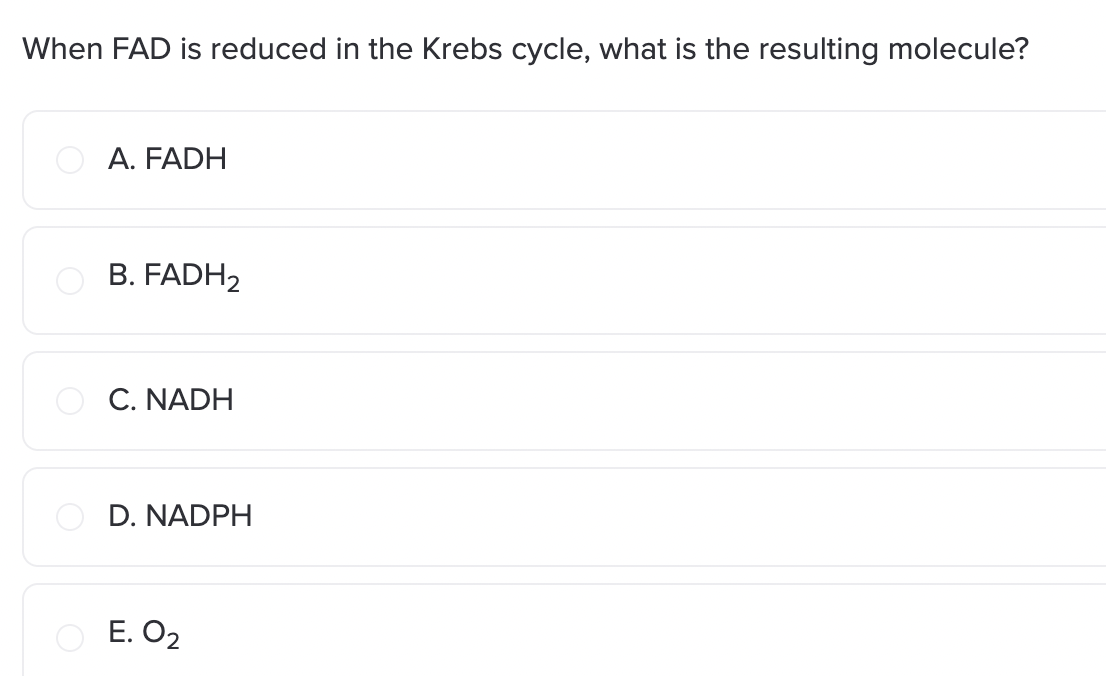
B
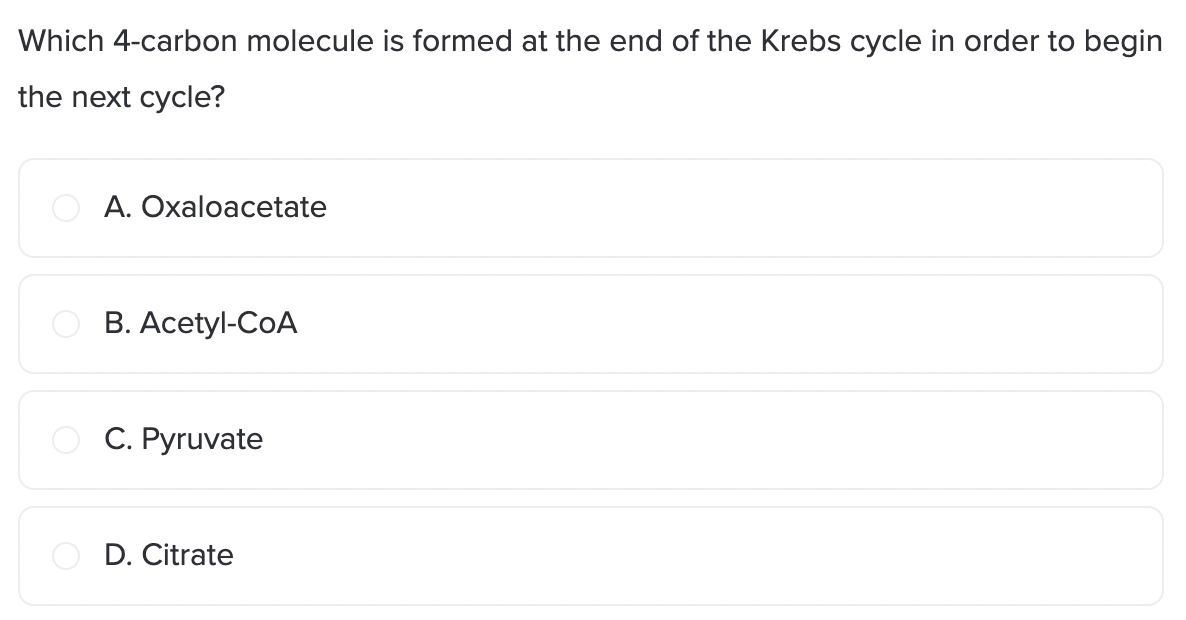
A
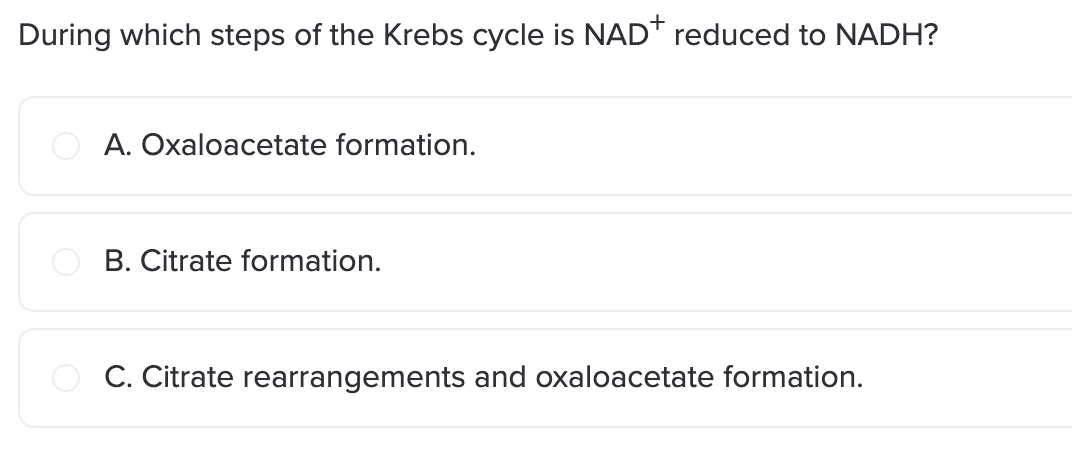
C
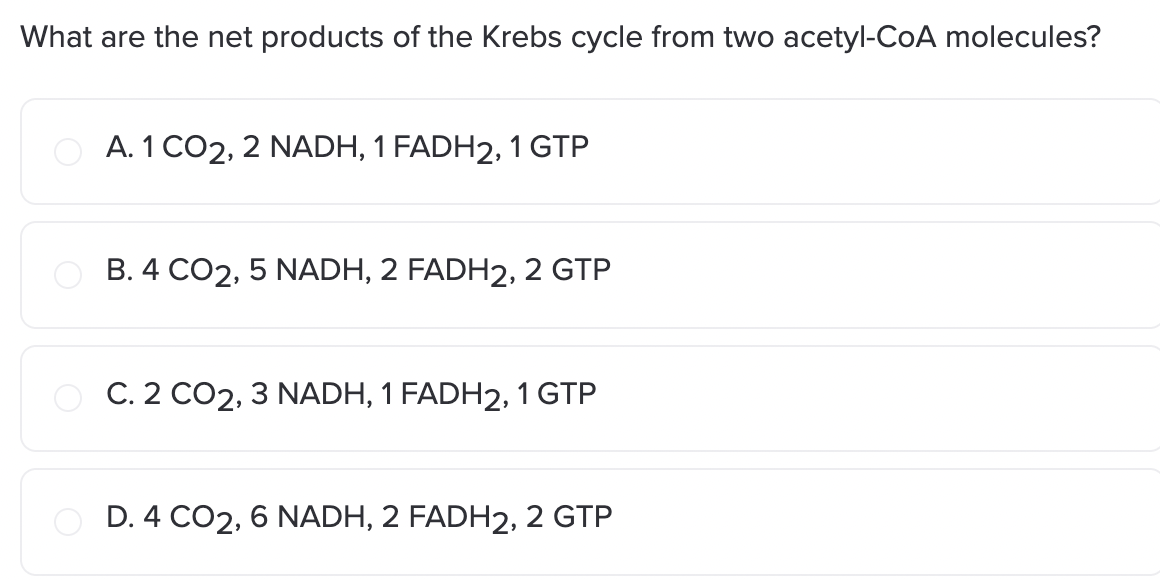
D
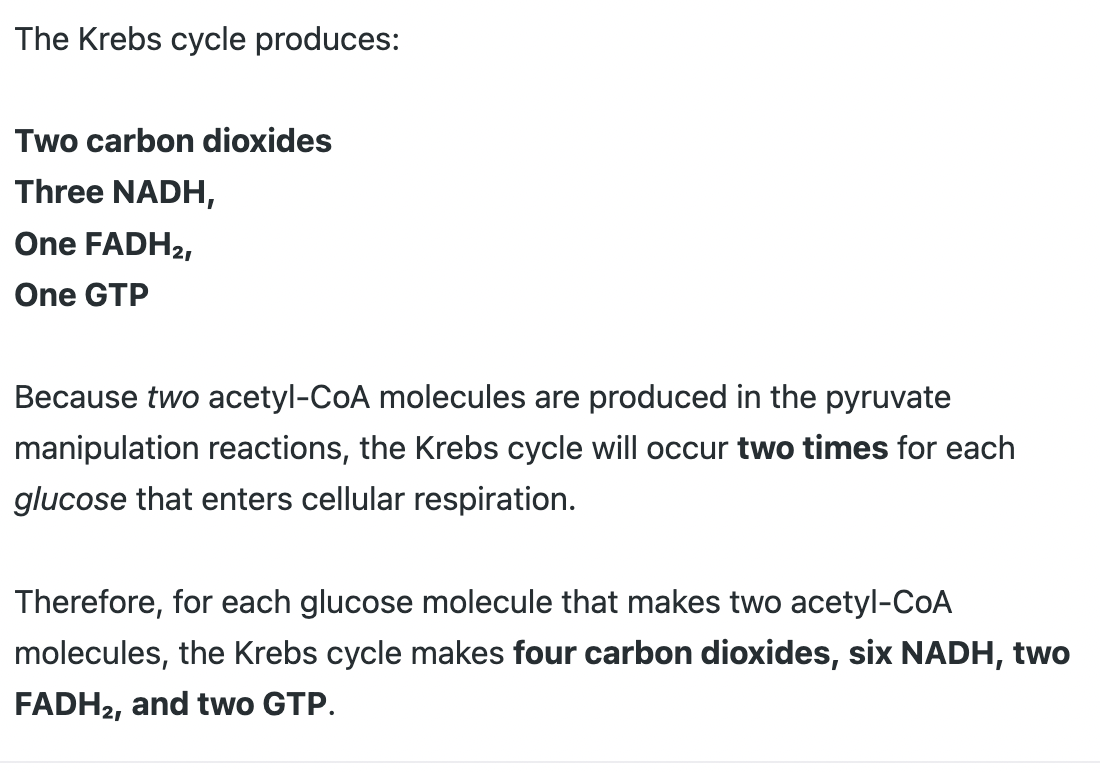
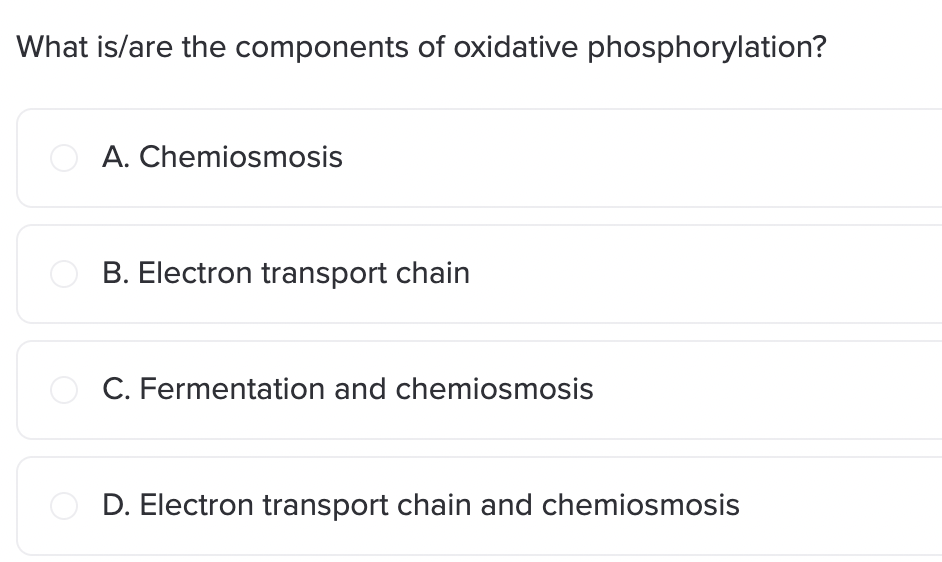
D
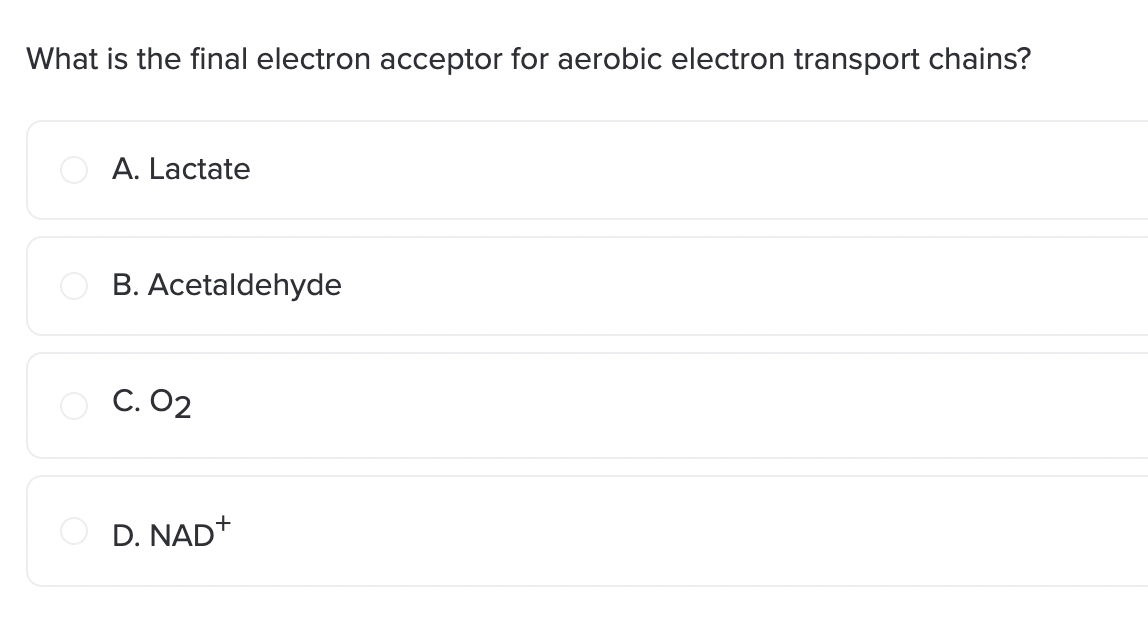
C
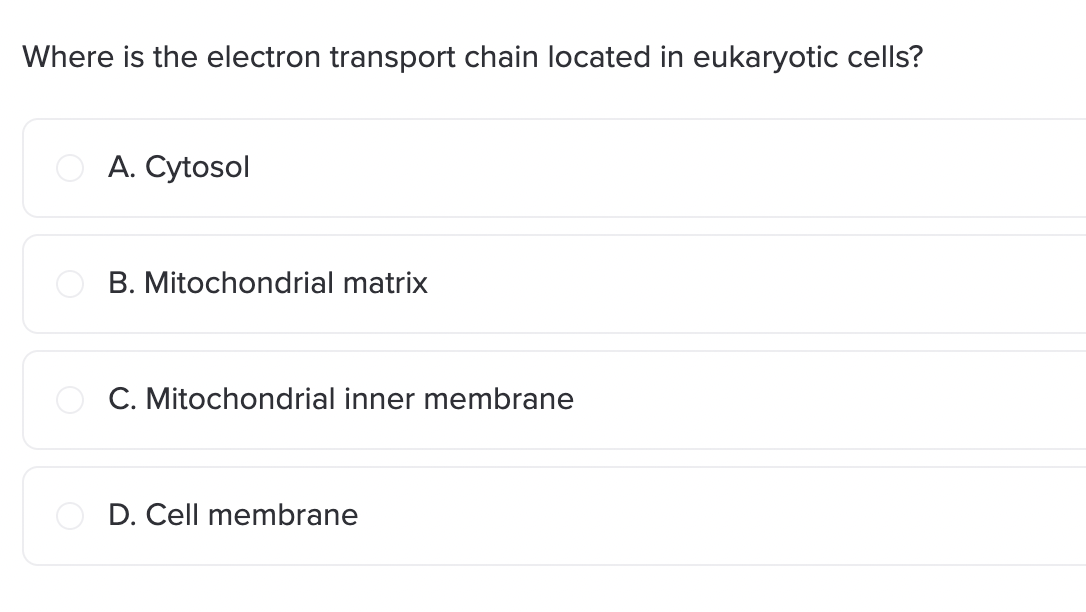
C

B

B
Oxidative phosphorylation directly depends on oxygen as the final electron acceptor of aerobic ETCs. Without oxygen, oxidative phosphorylation would stop, which means the regeneration of the coenzymes needed for pyruvate oxidation (NAD⁺) and the Krebs cycle (NAD⁺ and FAD) would also stop.
Hence, aerobic pyruvate oxidations and Krebs cycles indirectly depend on oxygen.
Note that glycolysis has its own way of regenerating NAD⁺ without the ETC, and it does not rely on oxygen (anaerobic).
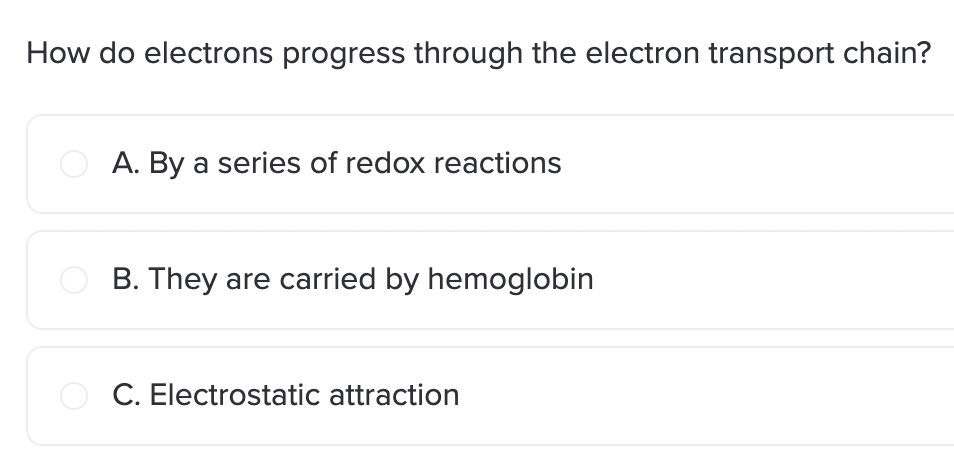
A
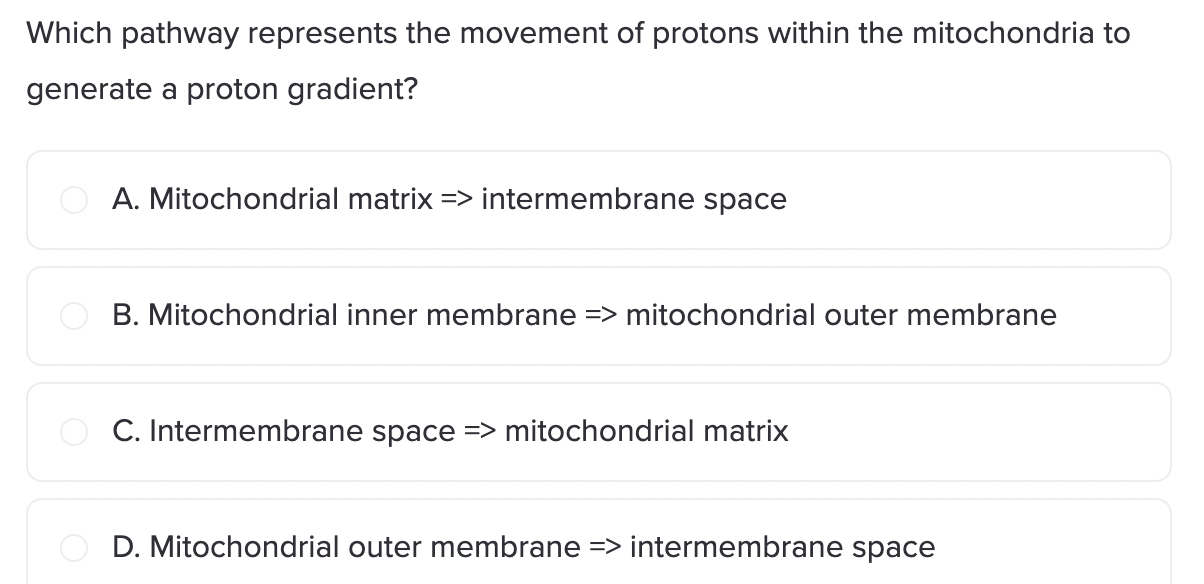
A
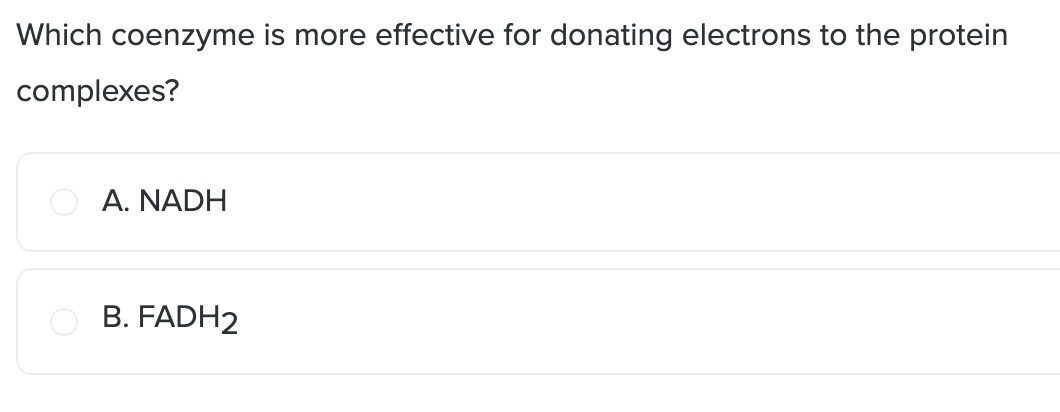
A
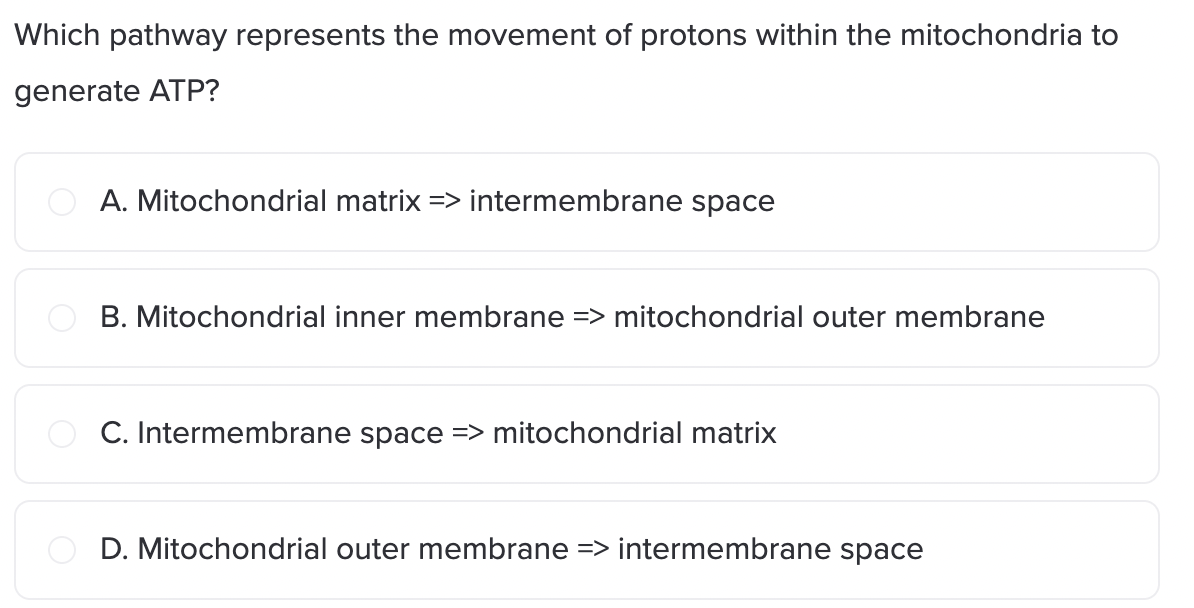
C

D
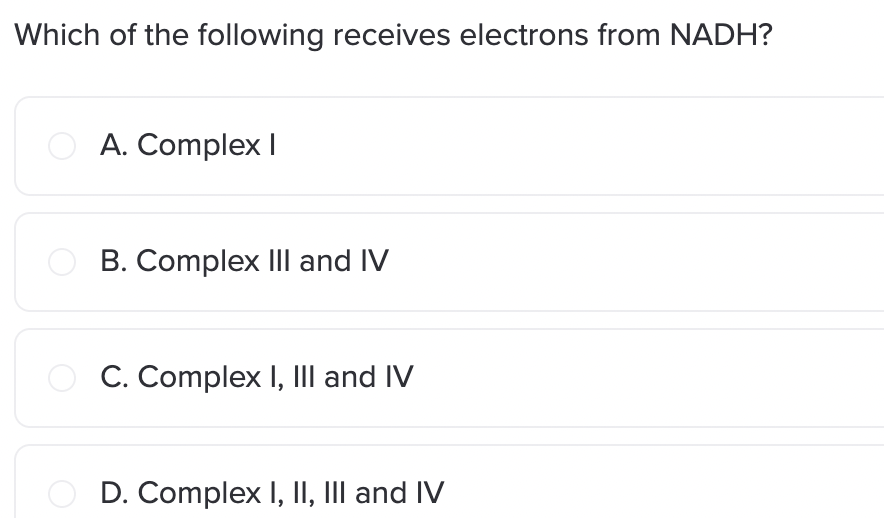
A
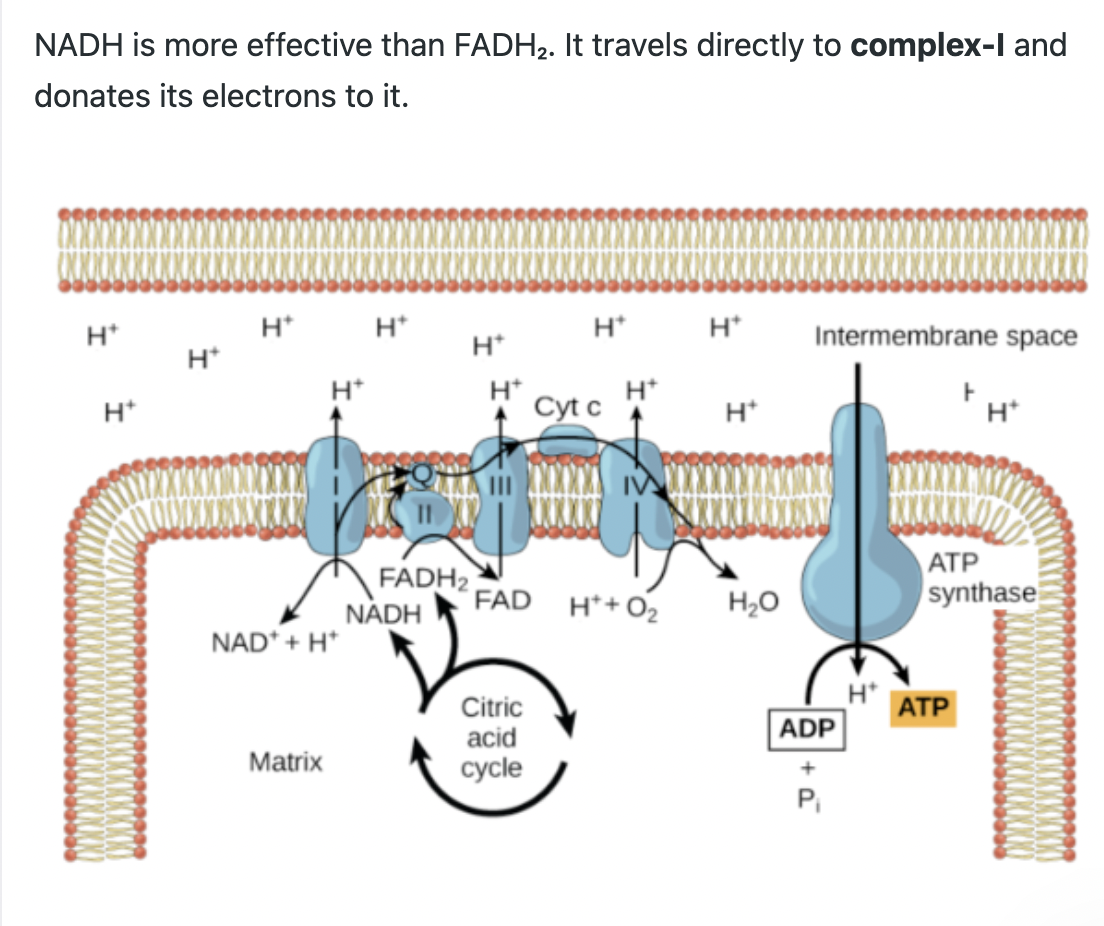
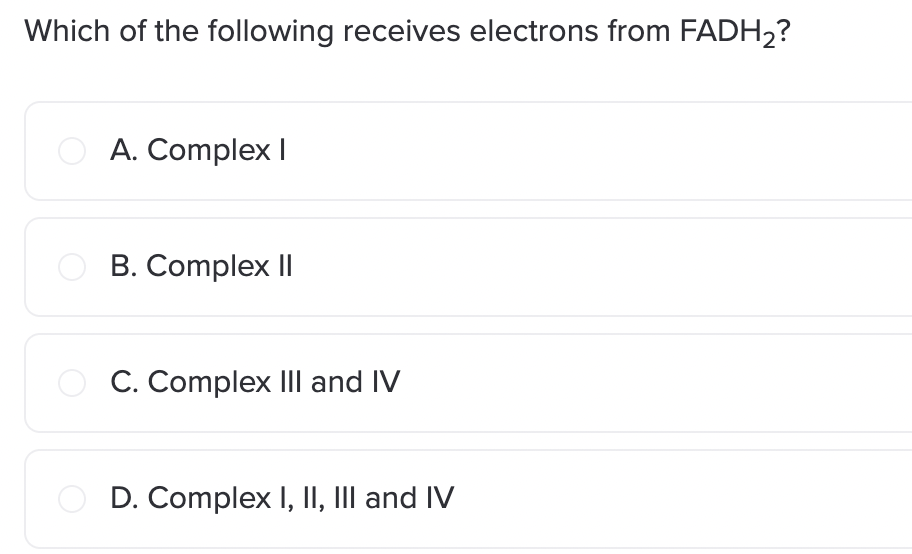
B

B
A special enzyme called ATP synthase is responsible for synthesizing ATP. It accomplishes this because it is like a big fan that spins as protons travel through it, the proton motive force. As it spins, ATP synthase catalyzes the condensation of ADP + Pᵢ into ATP in the mitochondrial matrix.

D
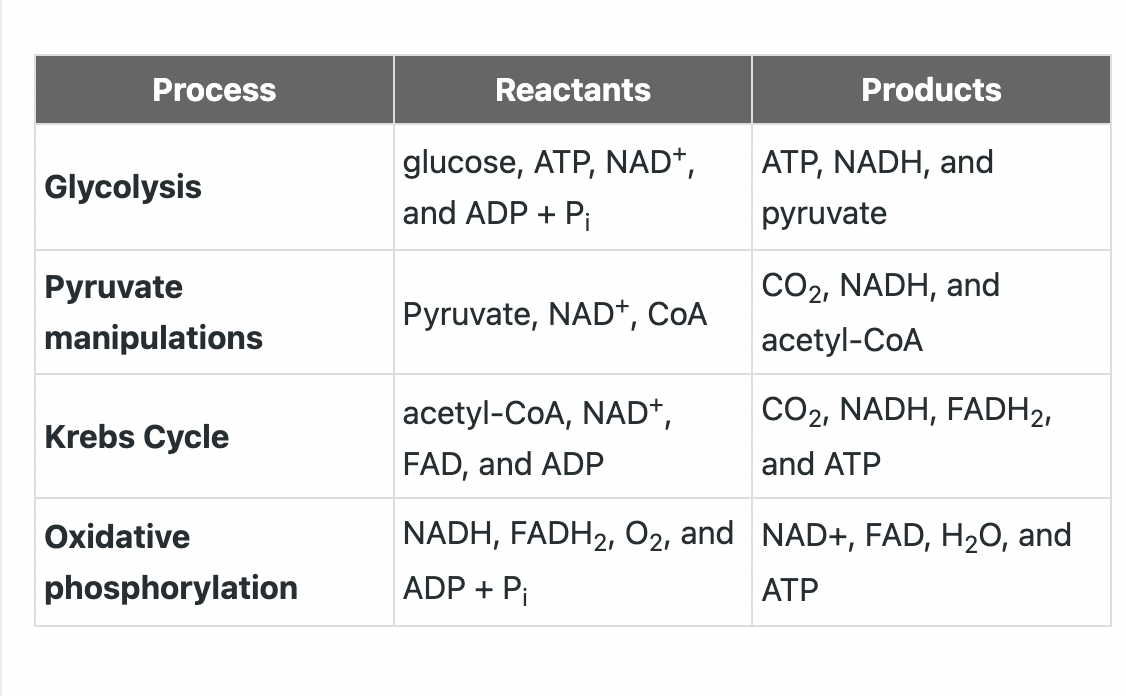

D
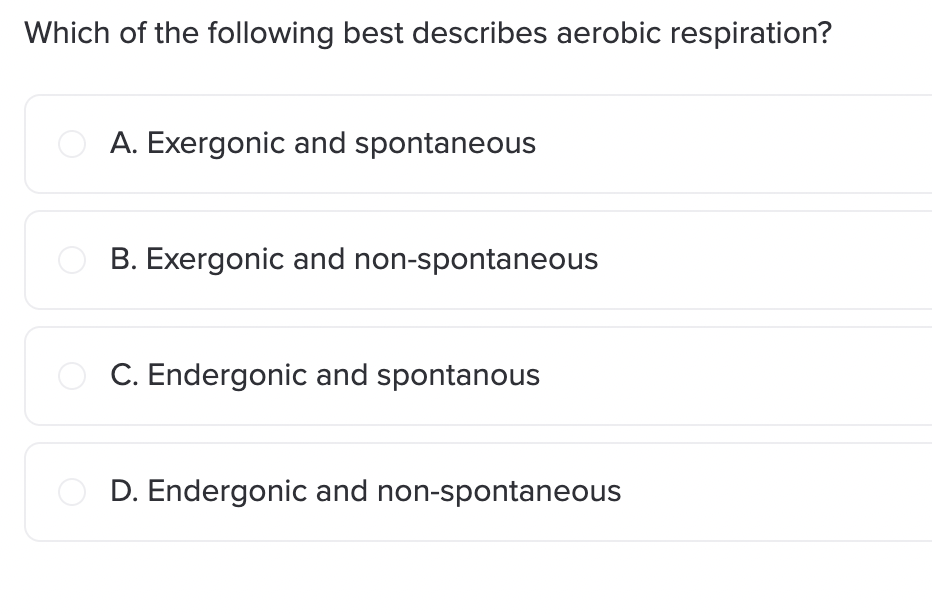
A
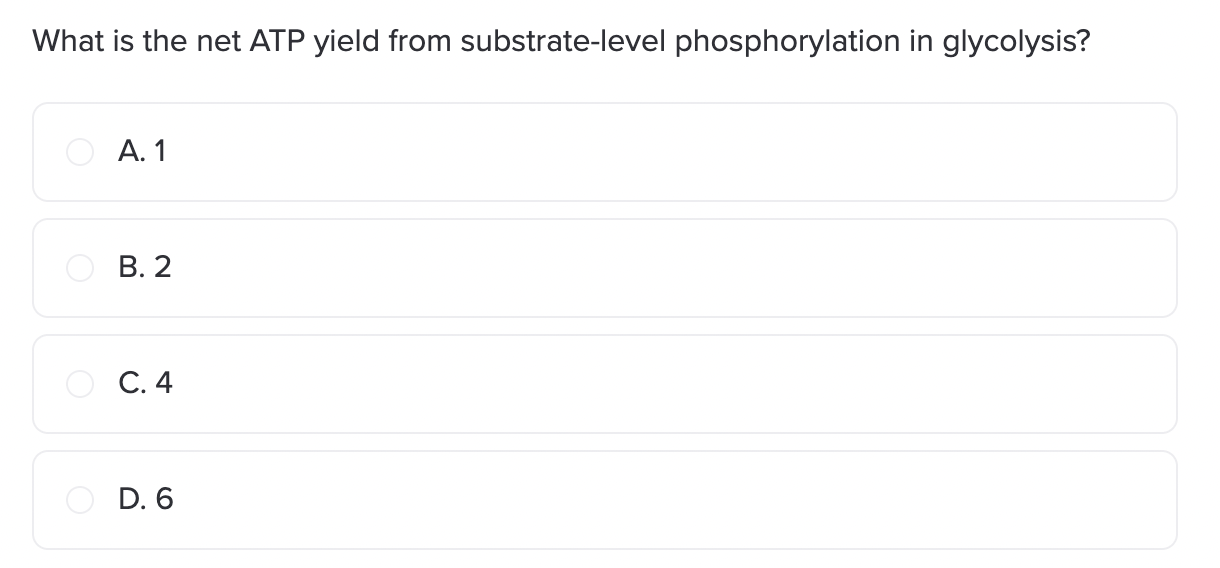
B
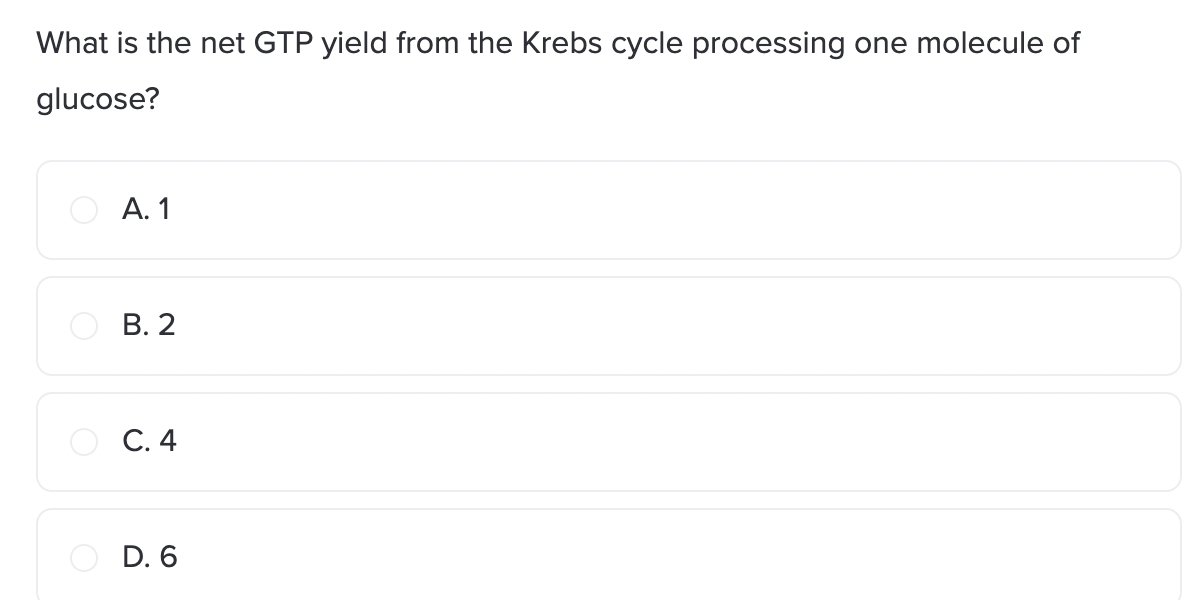
B
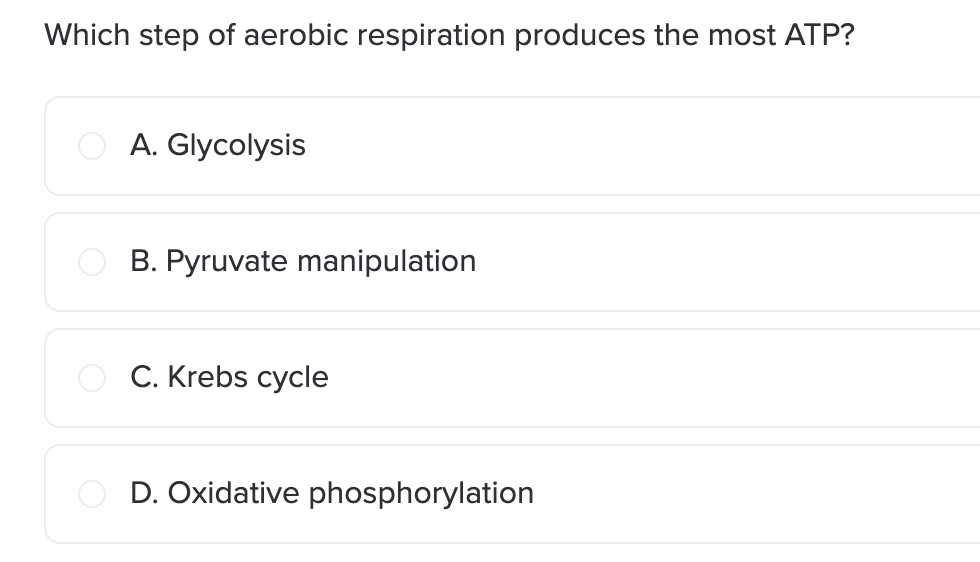
D
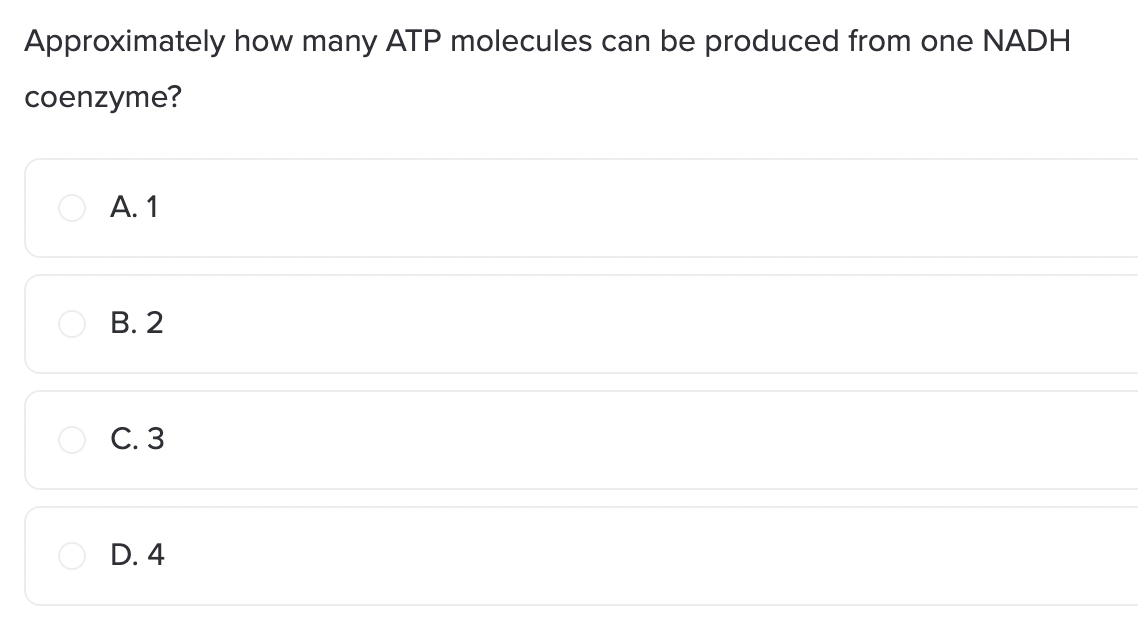
C
A single NADH coenzyme will produce about 3 ATP.
DAT Pro-Tip: In eukaryotes, NADH from glycolysis will have a lower net ATP yield because some ATP is consumed when shuttling NADH to the mitochondrial matrix.
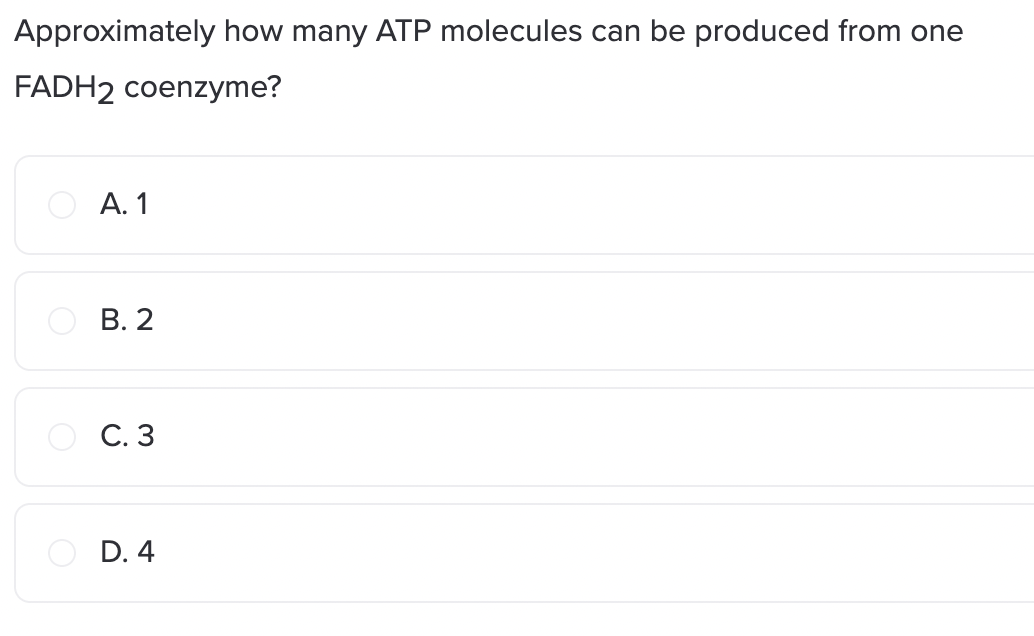
B
Because FADH₂ reduces a later complex, a single FADH₂ will produce about 2 ATP.
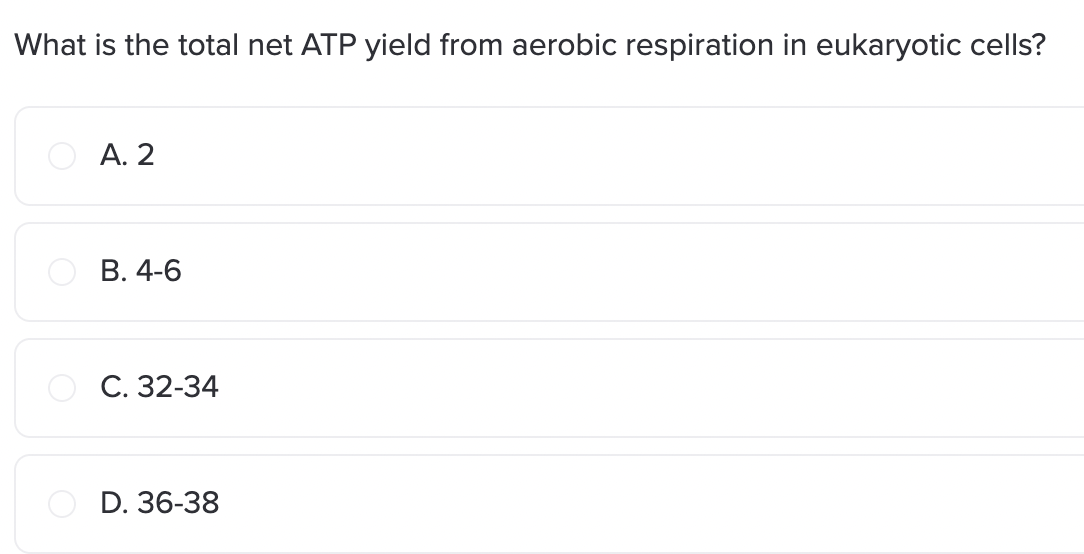
D
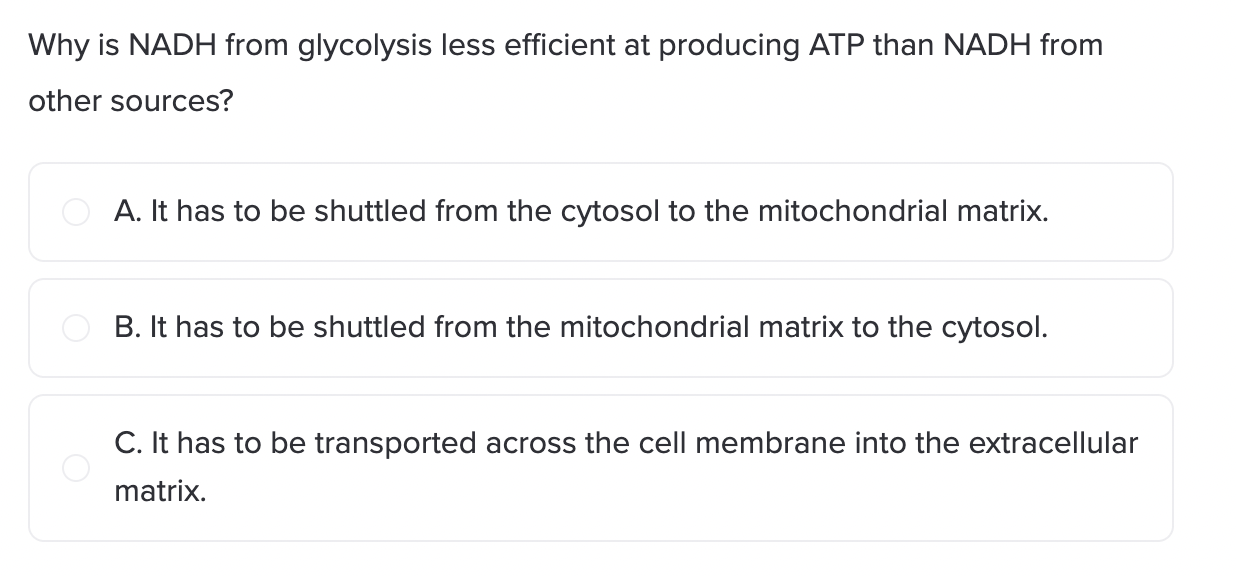
A

A
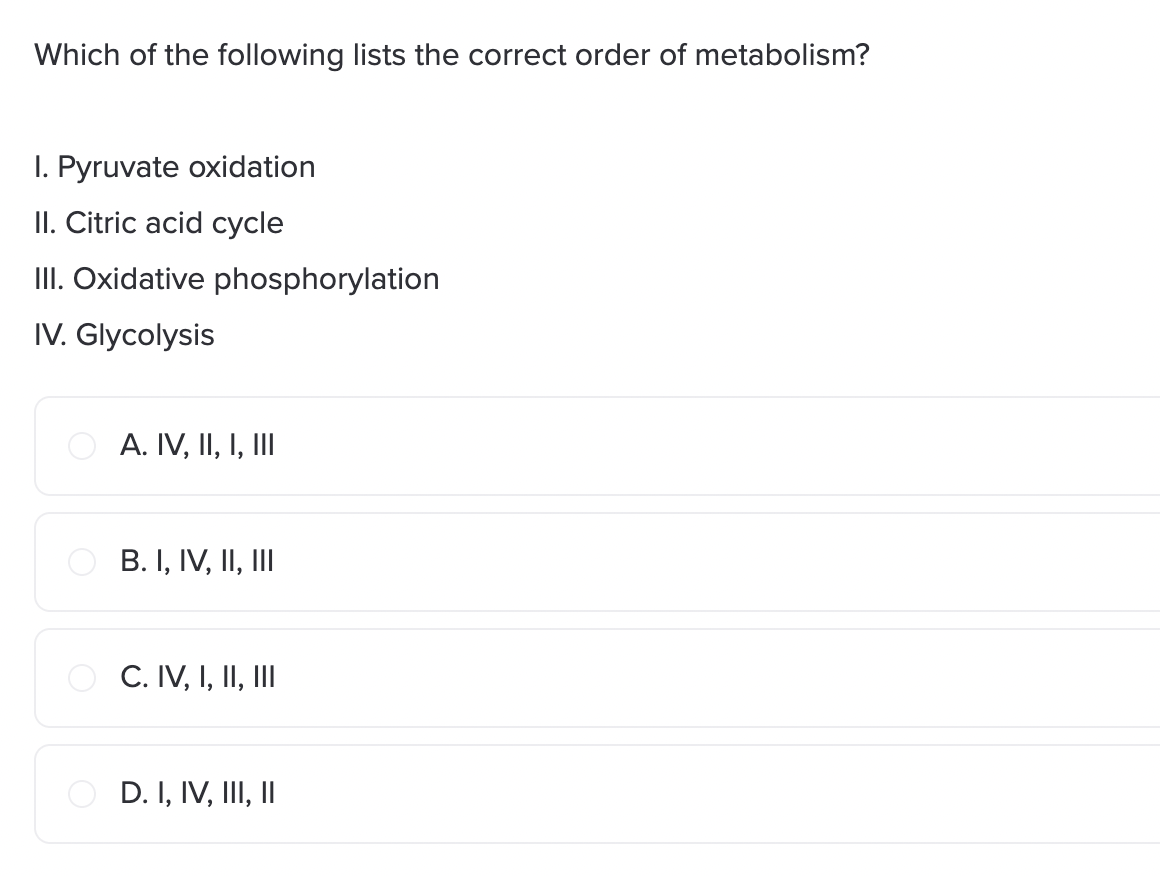
C
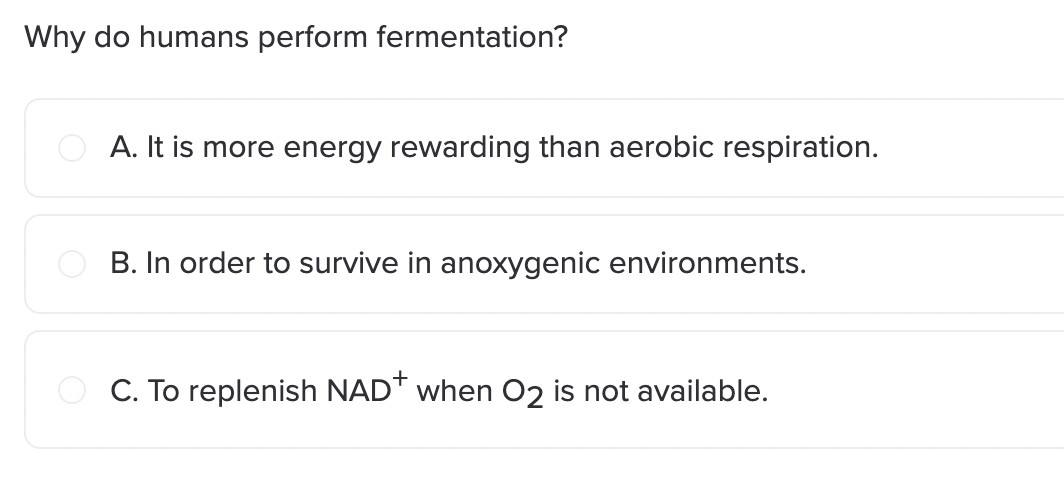
C
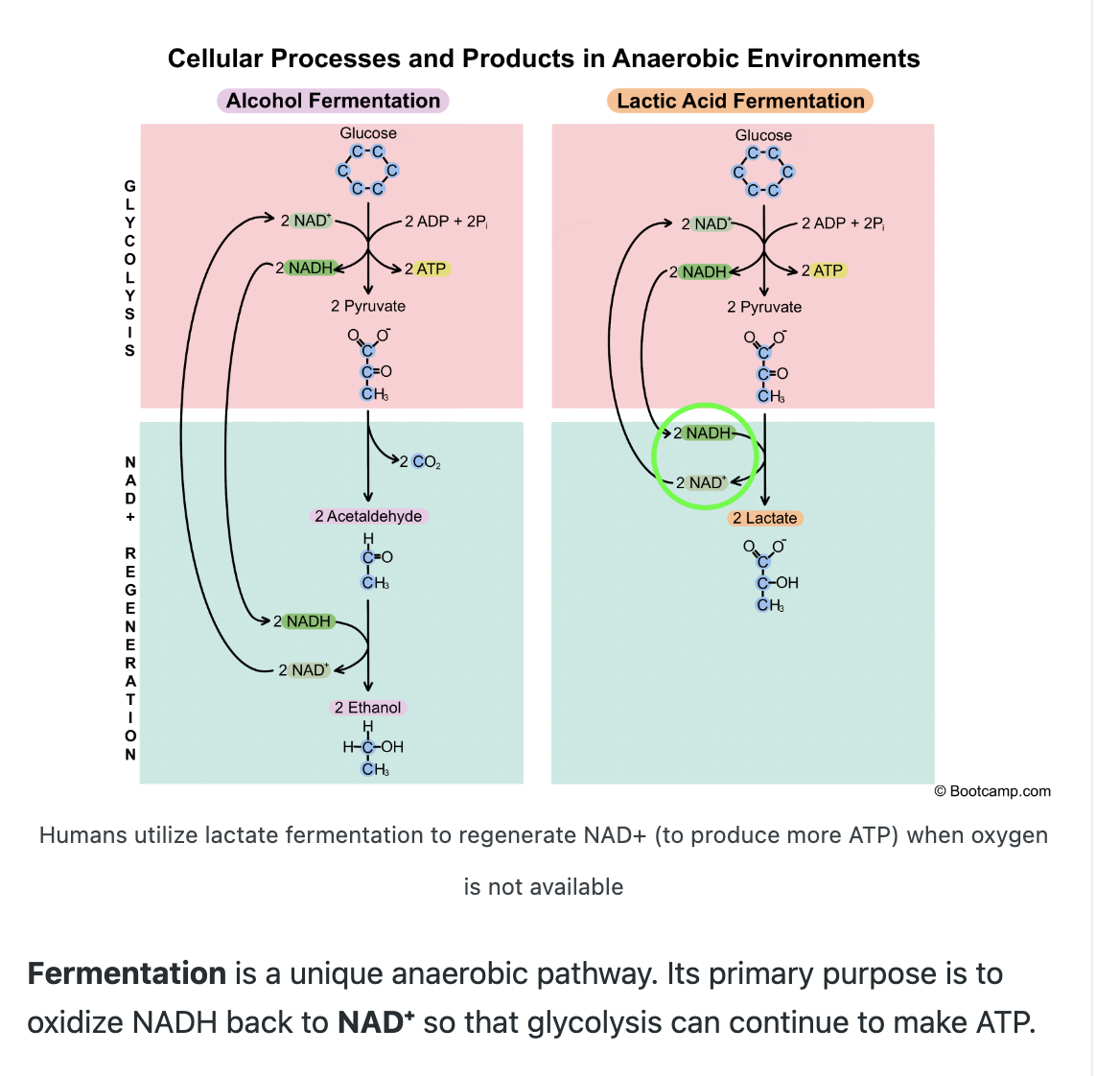

B
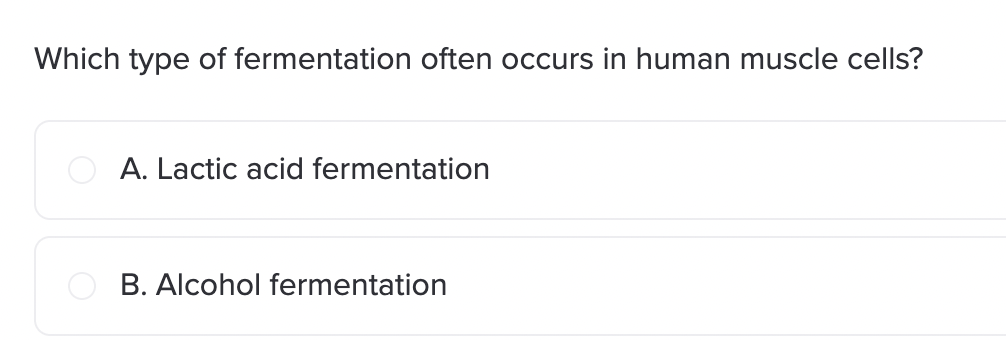
A
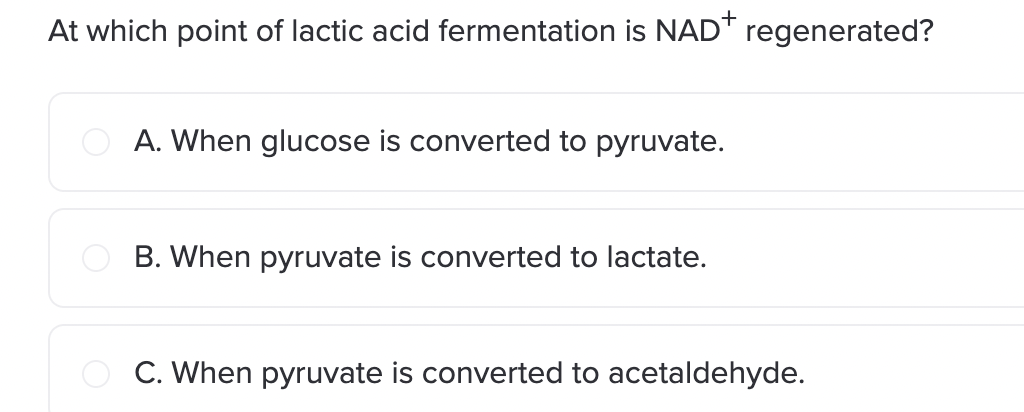
B
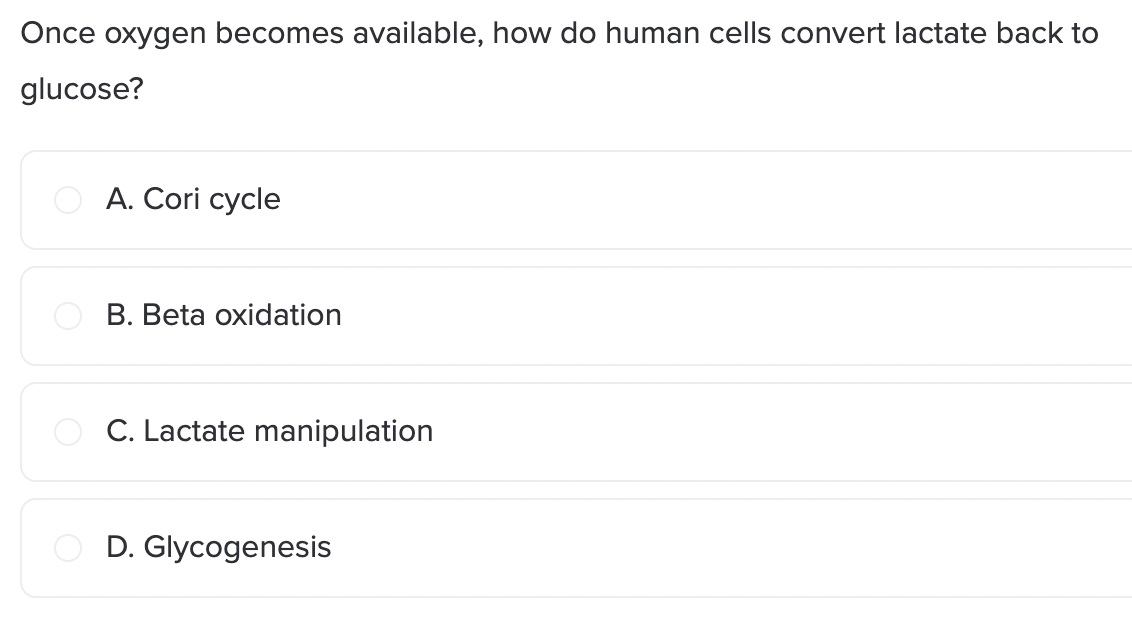
A
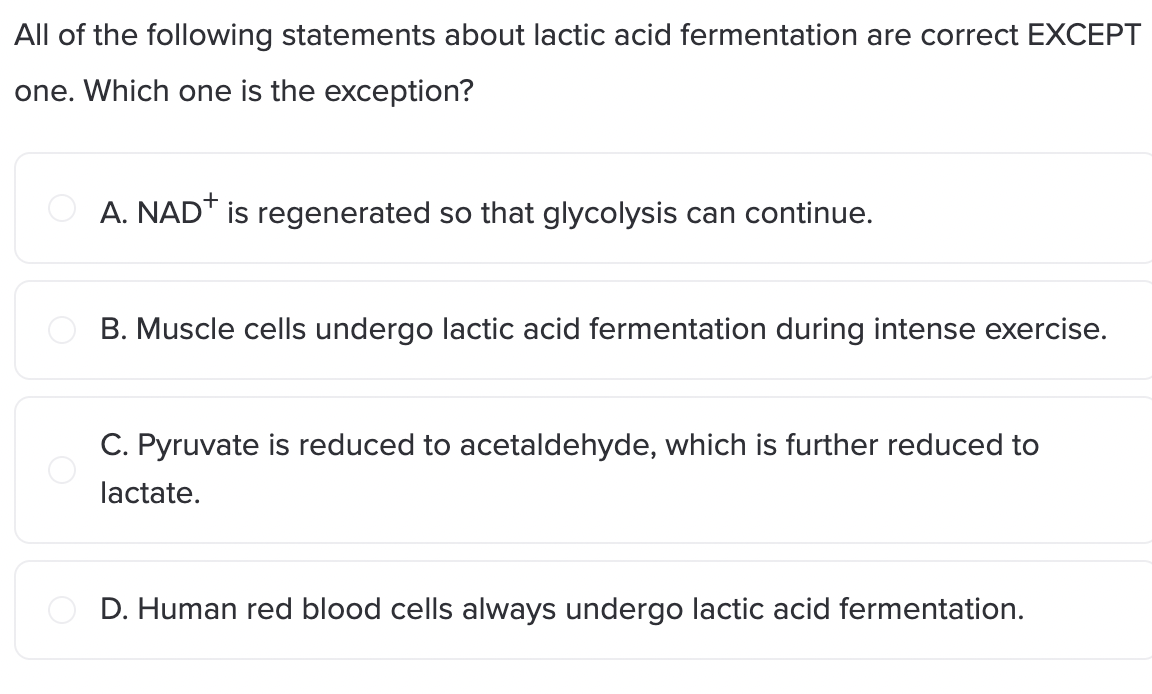
C
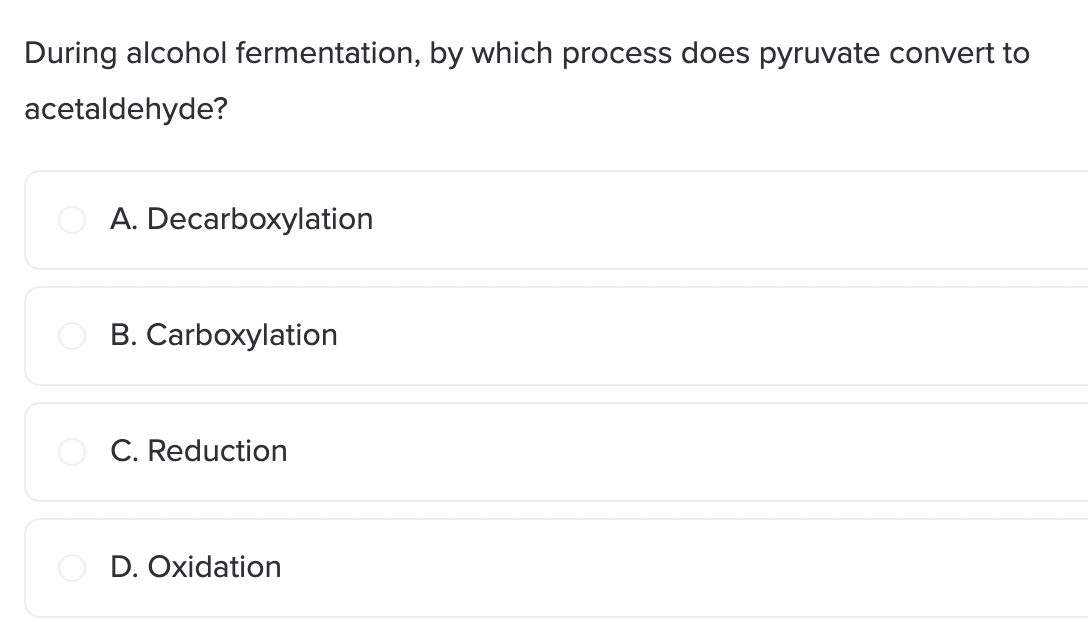
A
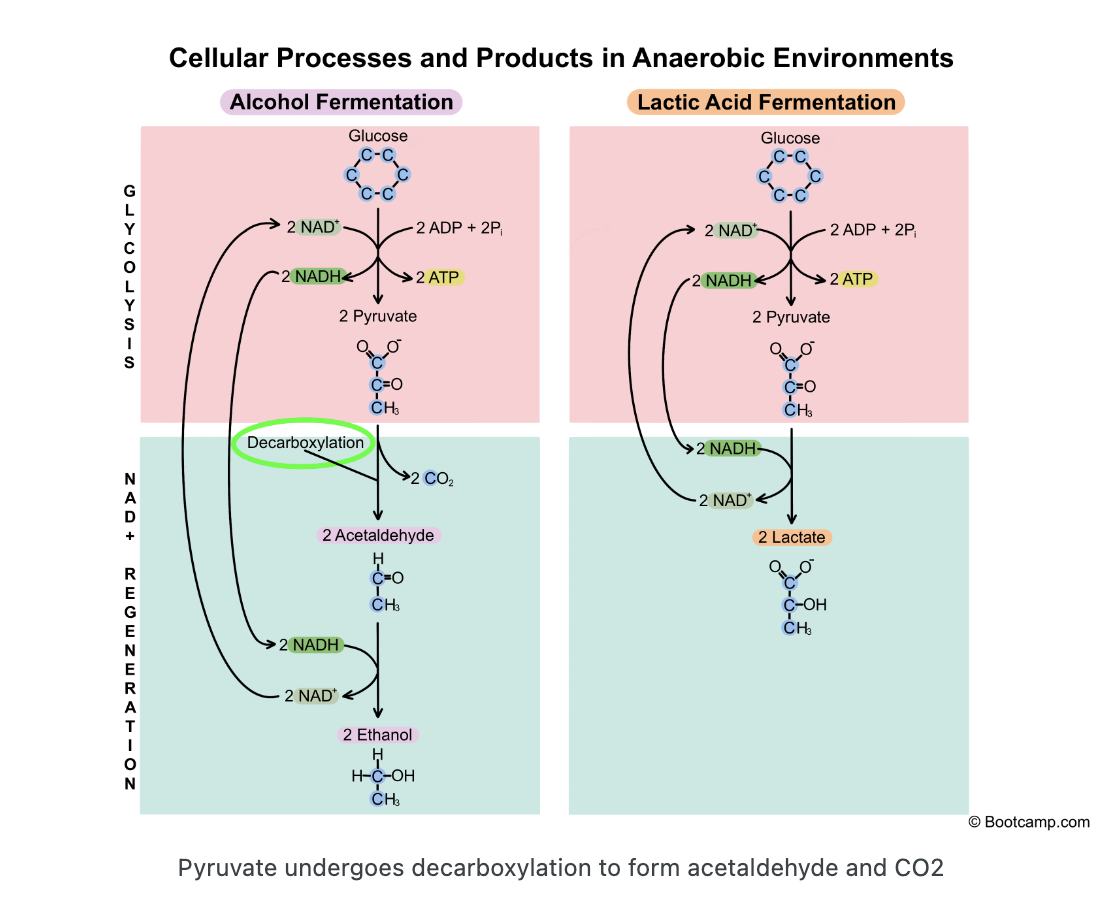
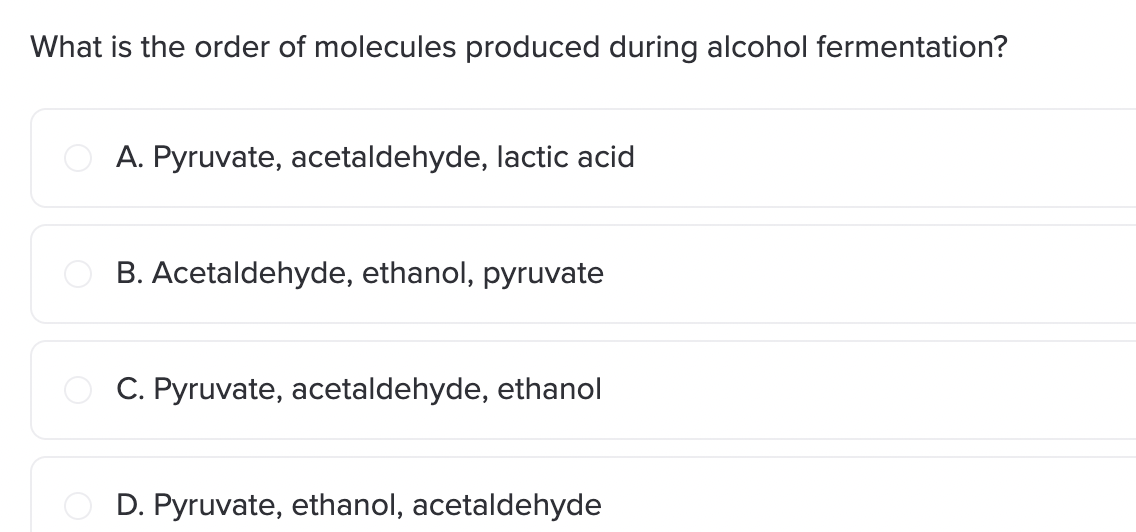
C
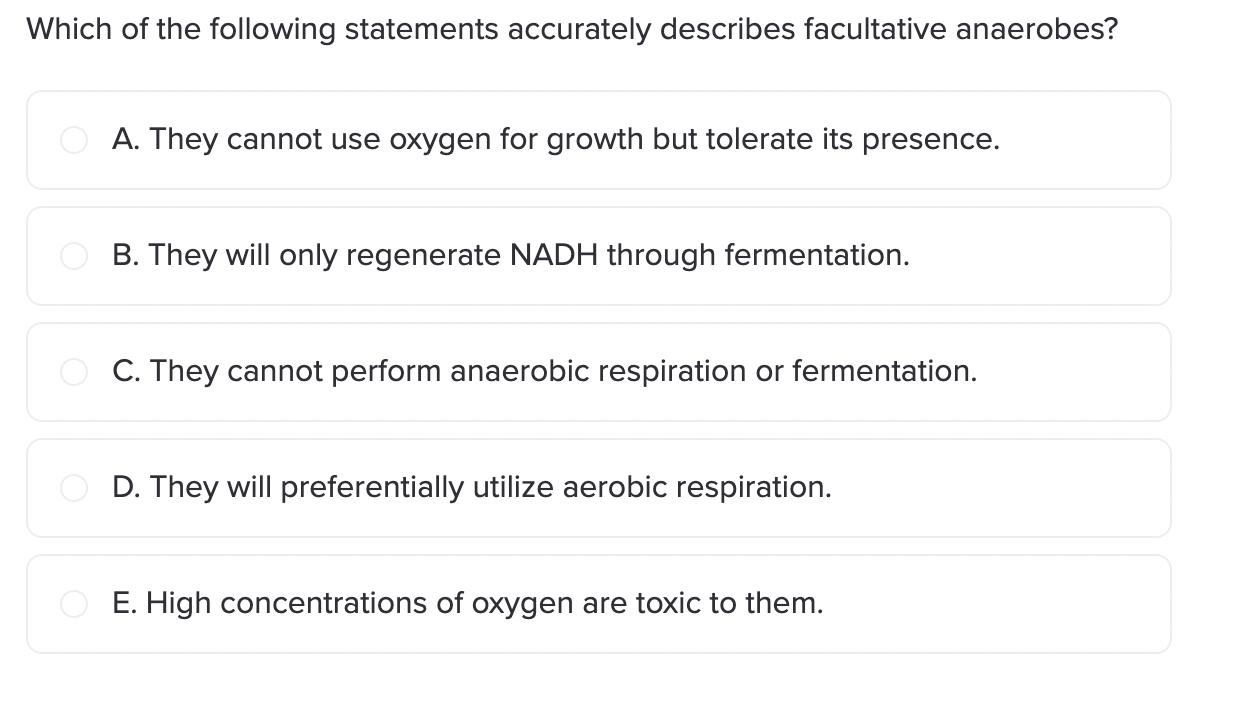
D

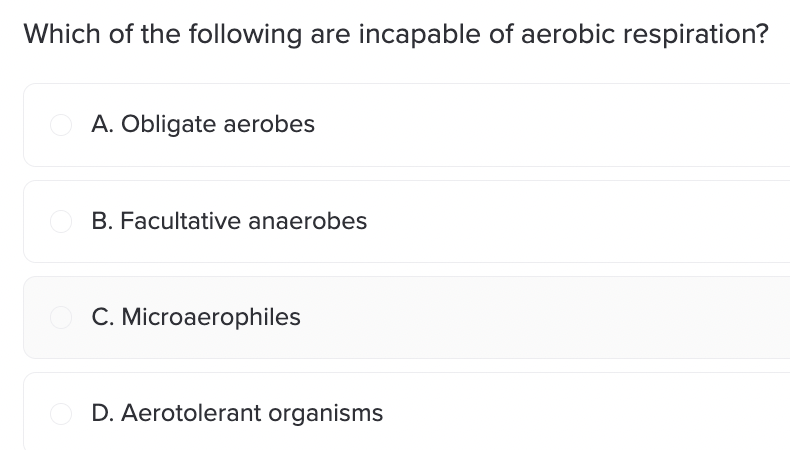
D
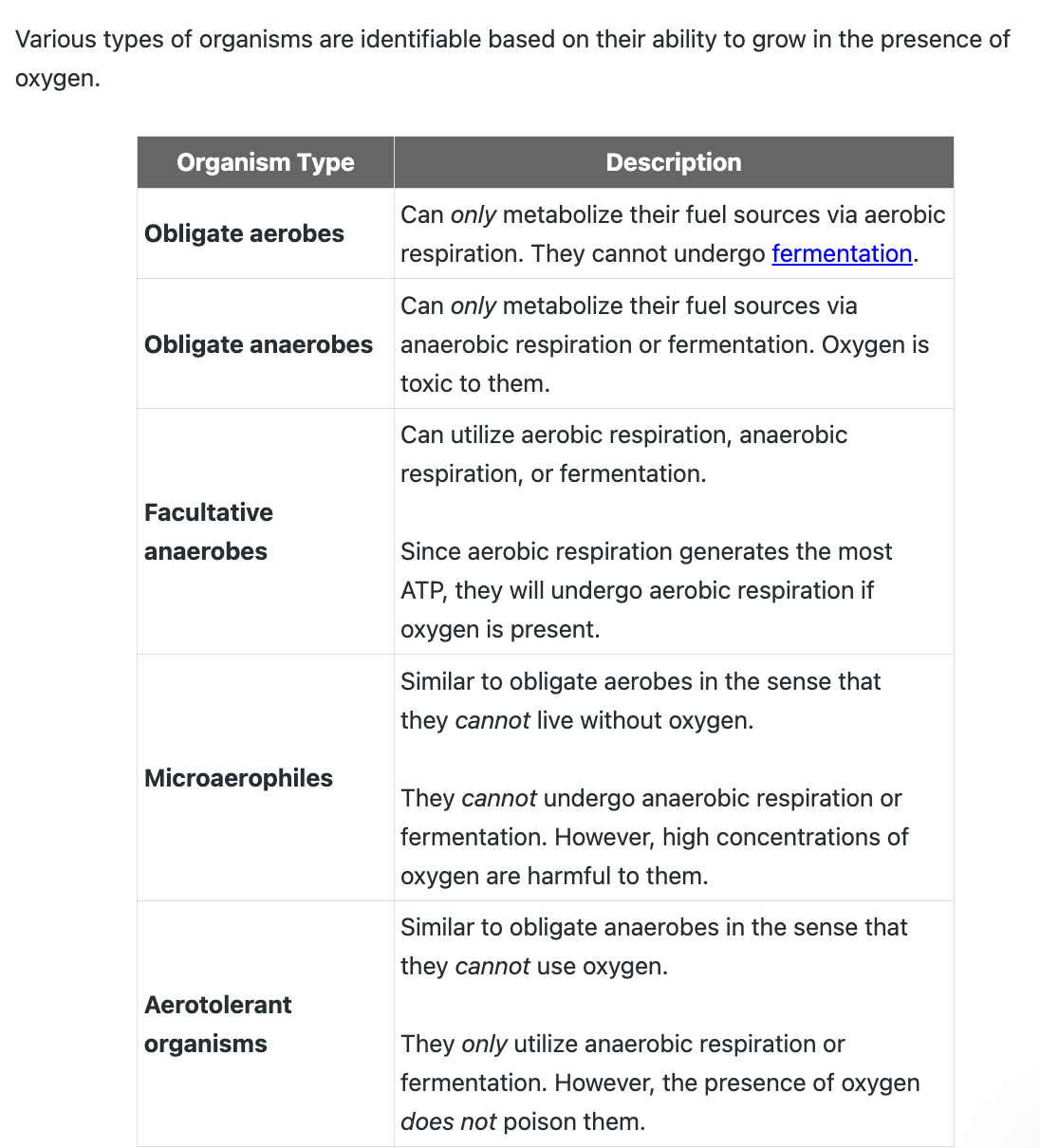

C

C

B
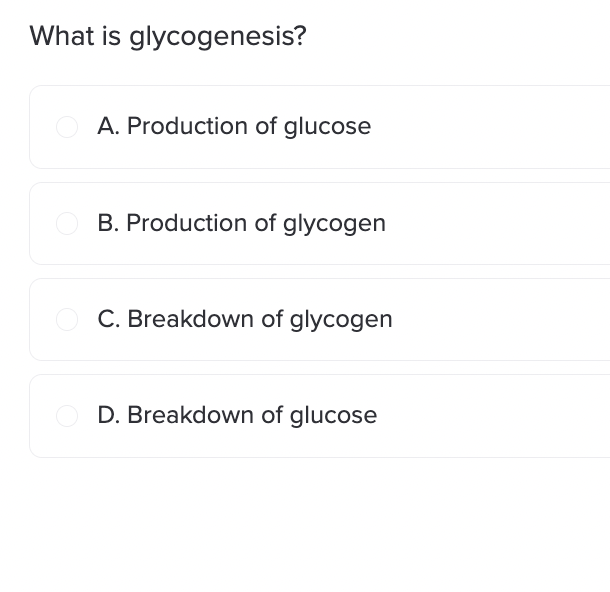
B
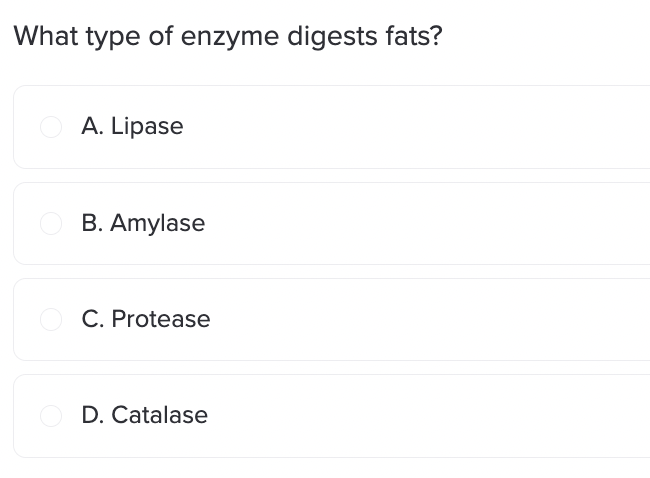
A

C

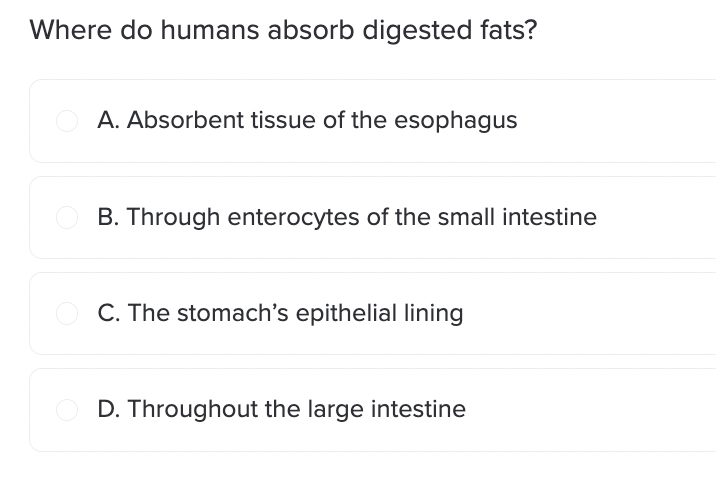
B
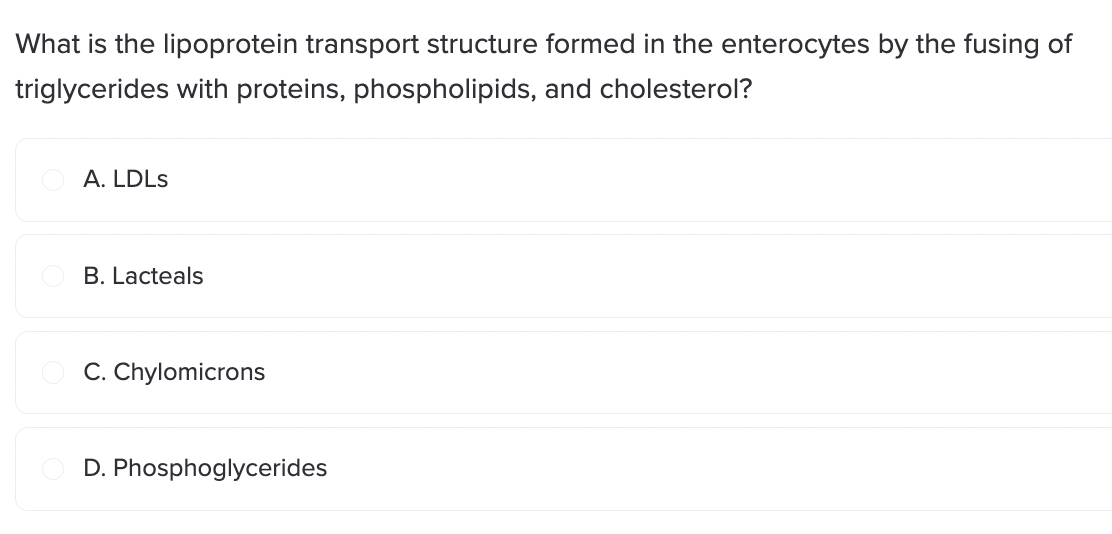
C
Chylomicrons are lipoprotein transport structures formed by the fusing of triglycerides with proteins, phospholipids, and cholesterol.

A
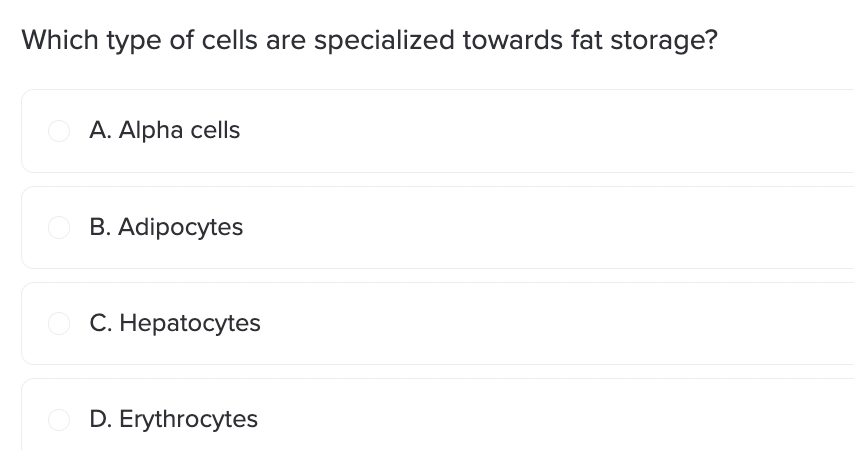
B

A
When it finally comes time to break down the stored triglycerides for energy, we remove the triglycerides from the adipose tissue and break them down via lipases. Lipolysis creates free fatty acids and glycerol molecules, which can then travel through the blood.
Fatty acids can travel in their free state (not esterified to glycerol) by binding to a protein called albumin.
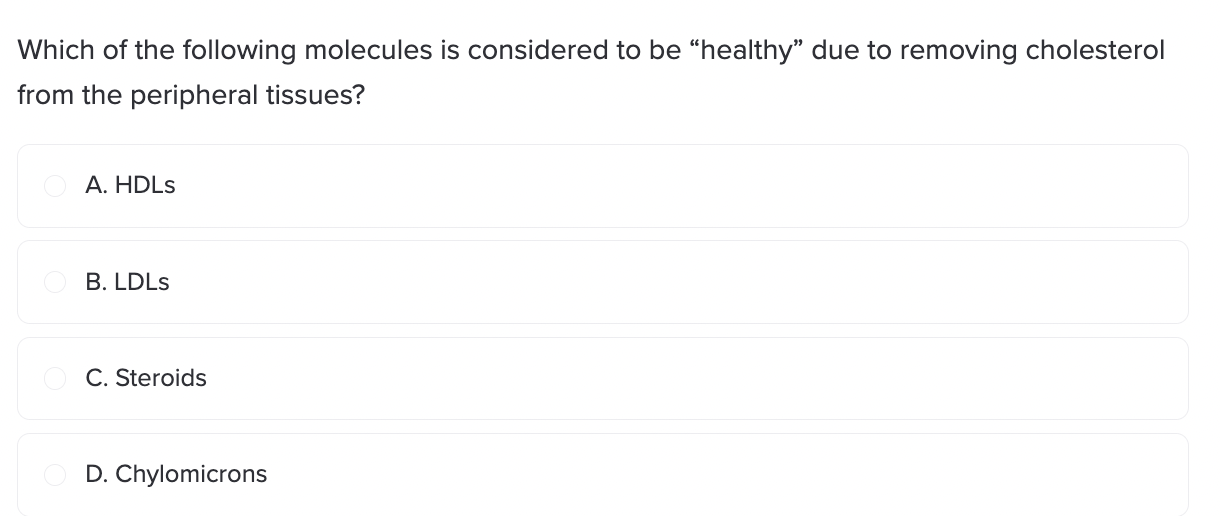
A
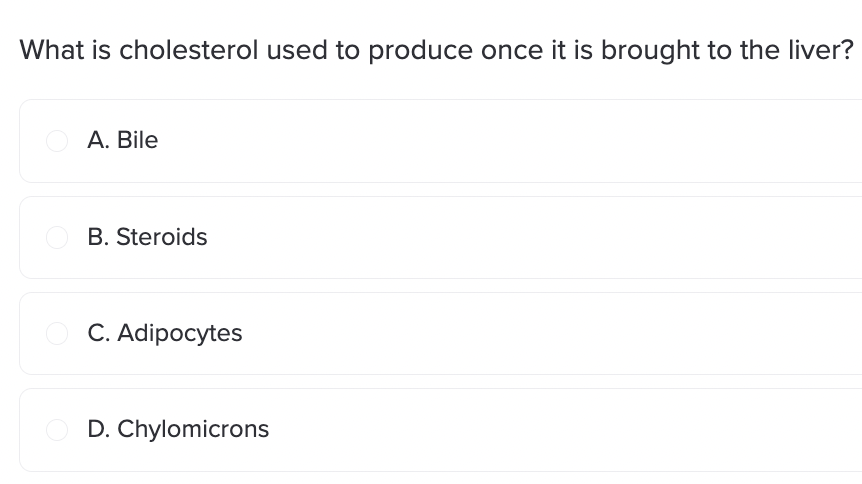
A
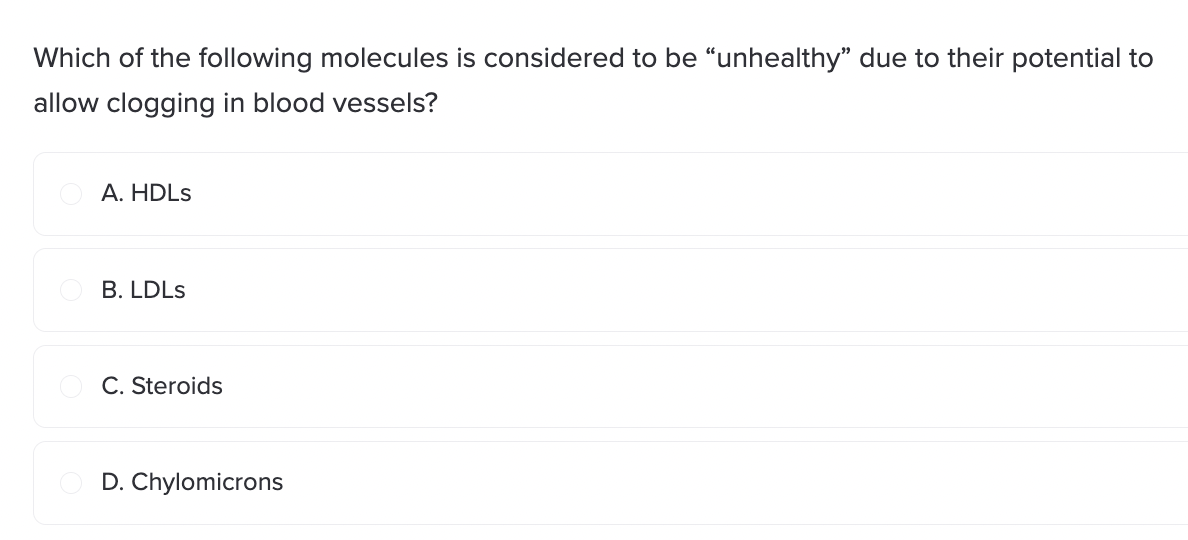
B

A
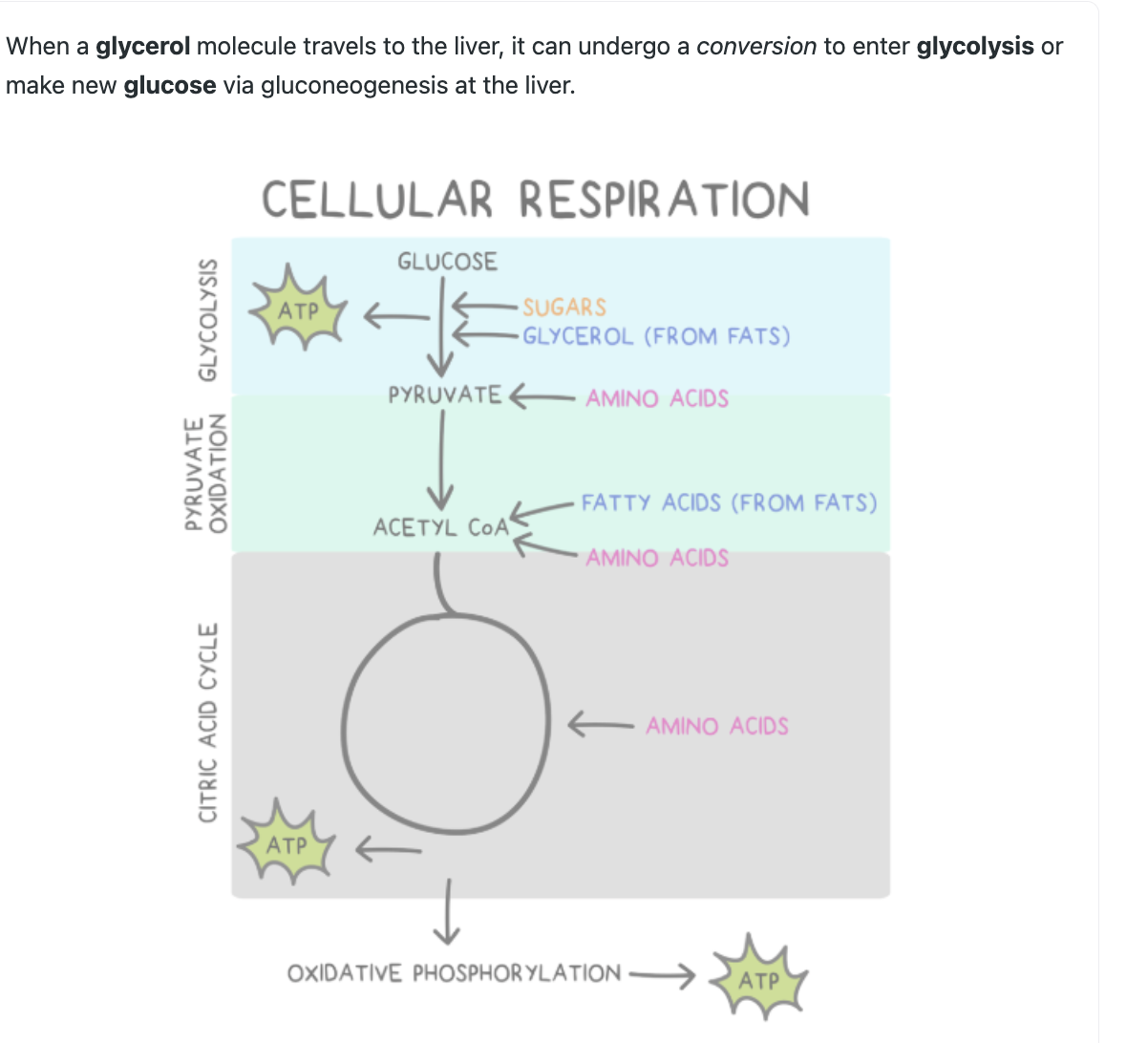

B
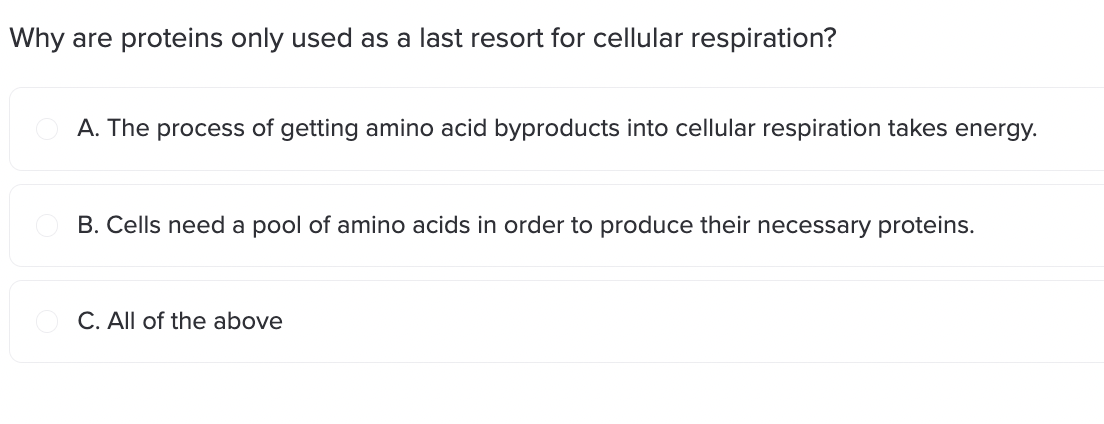
C
However, the processes used to get amino acid byproducts into cellular respiration require energy, which makes proteins an inefficient fuel source. The main disadvantage of proteins is that cells need a pool of amino acids for making the various proteins they use to carry out their functions. Therefore, proteins are a last resort in cellular respiration.